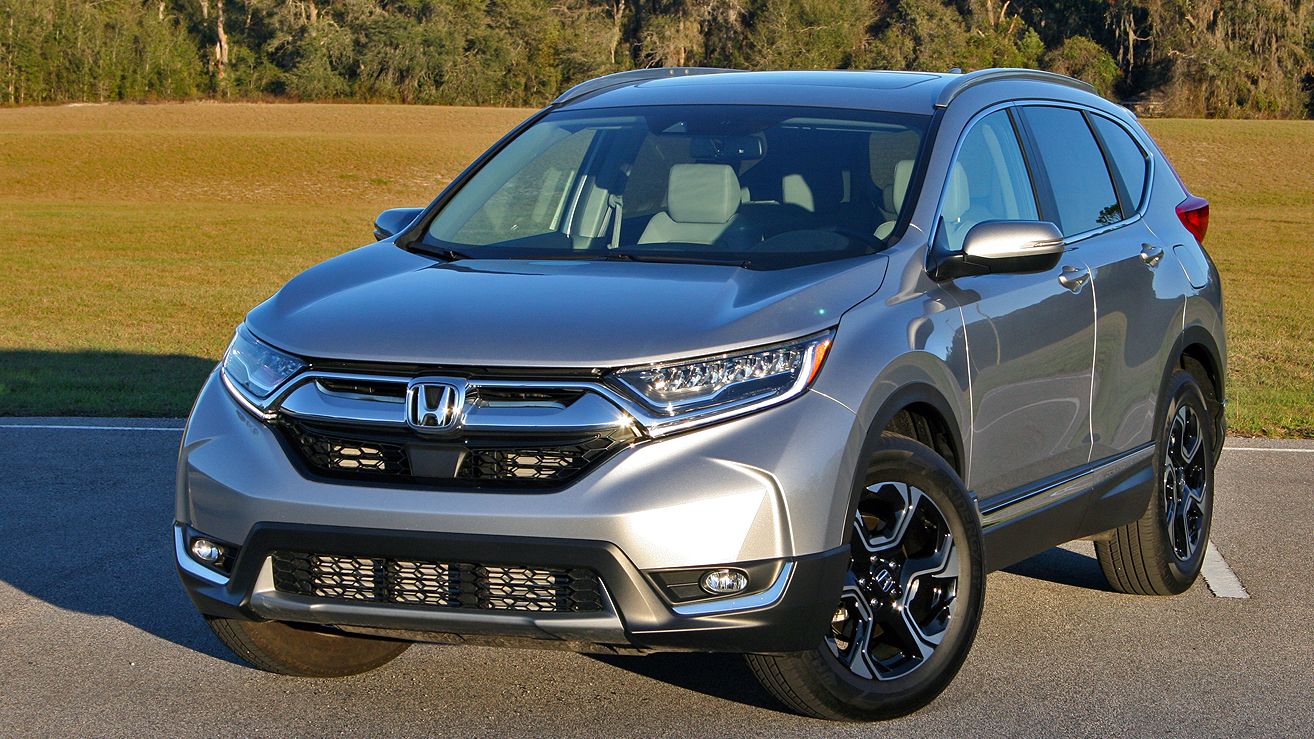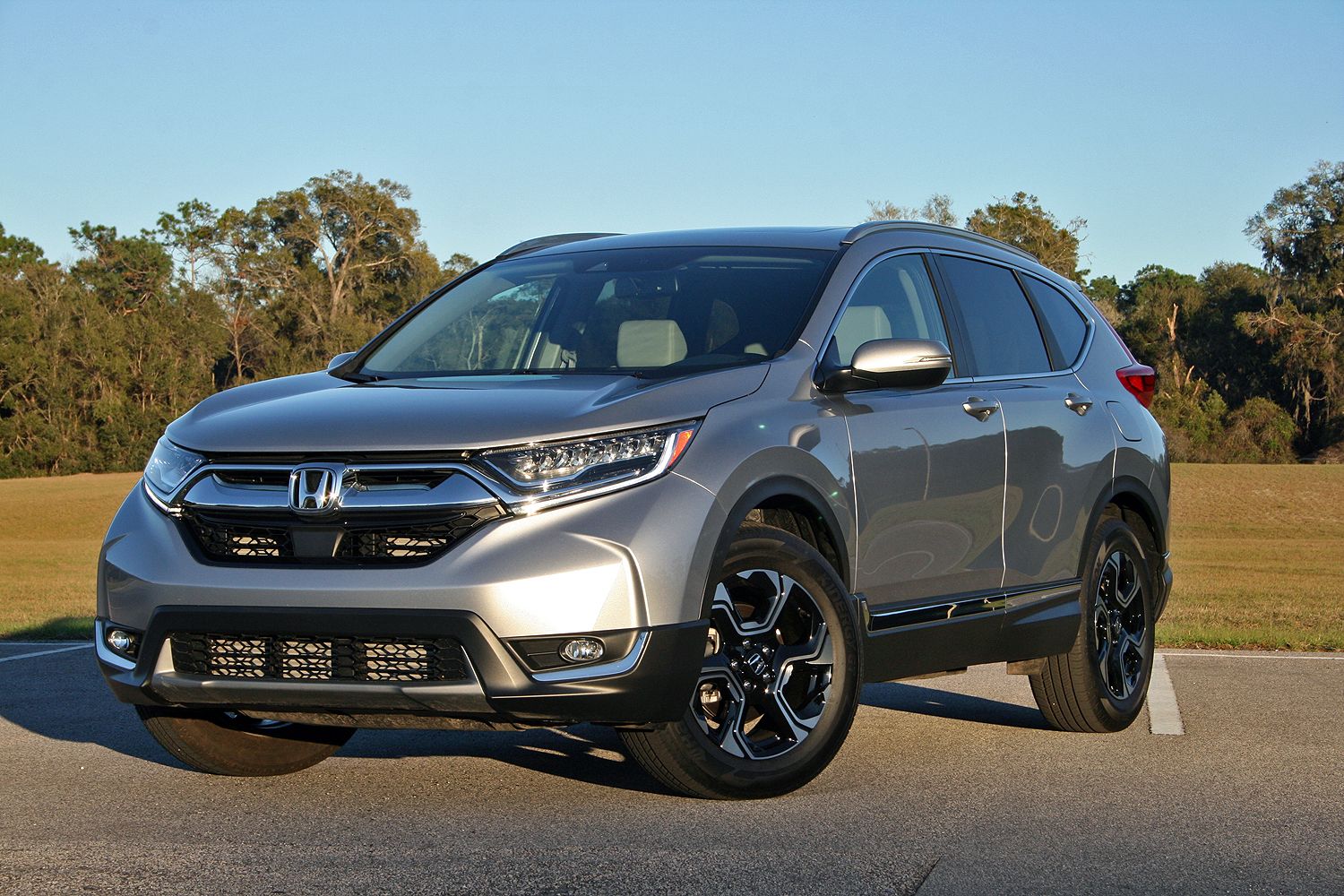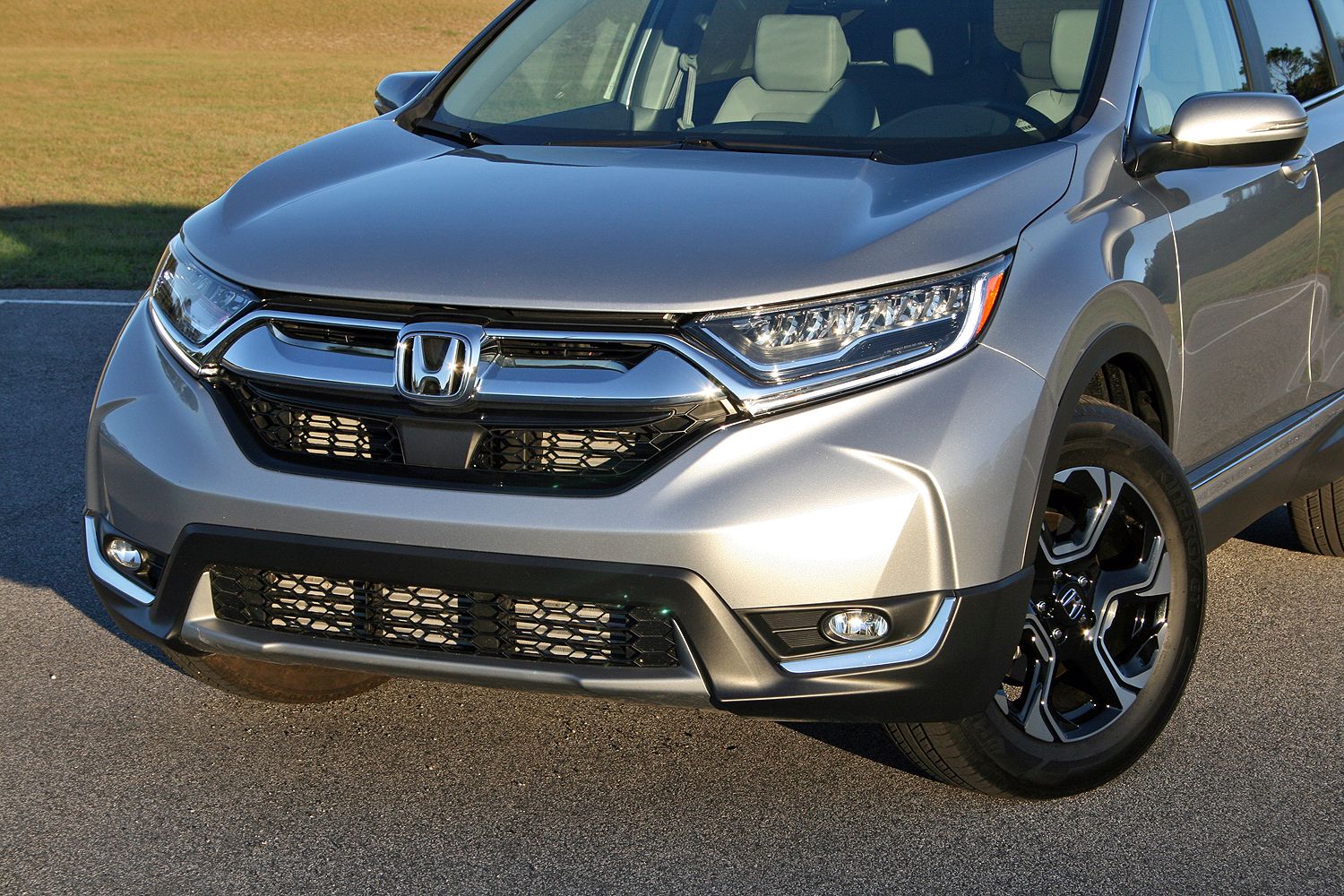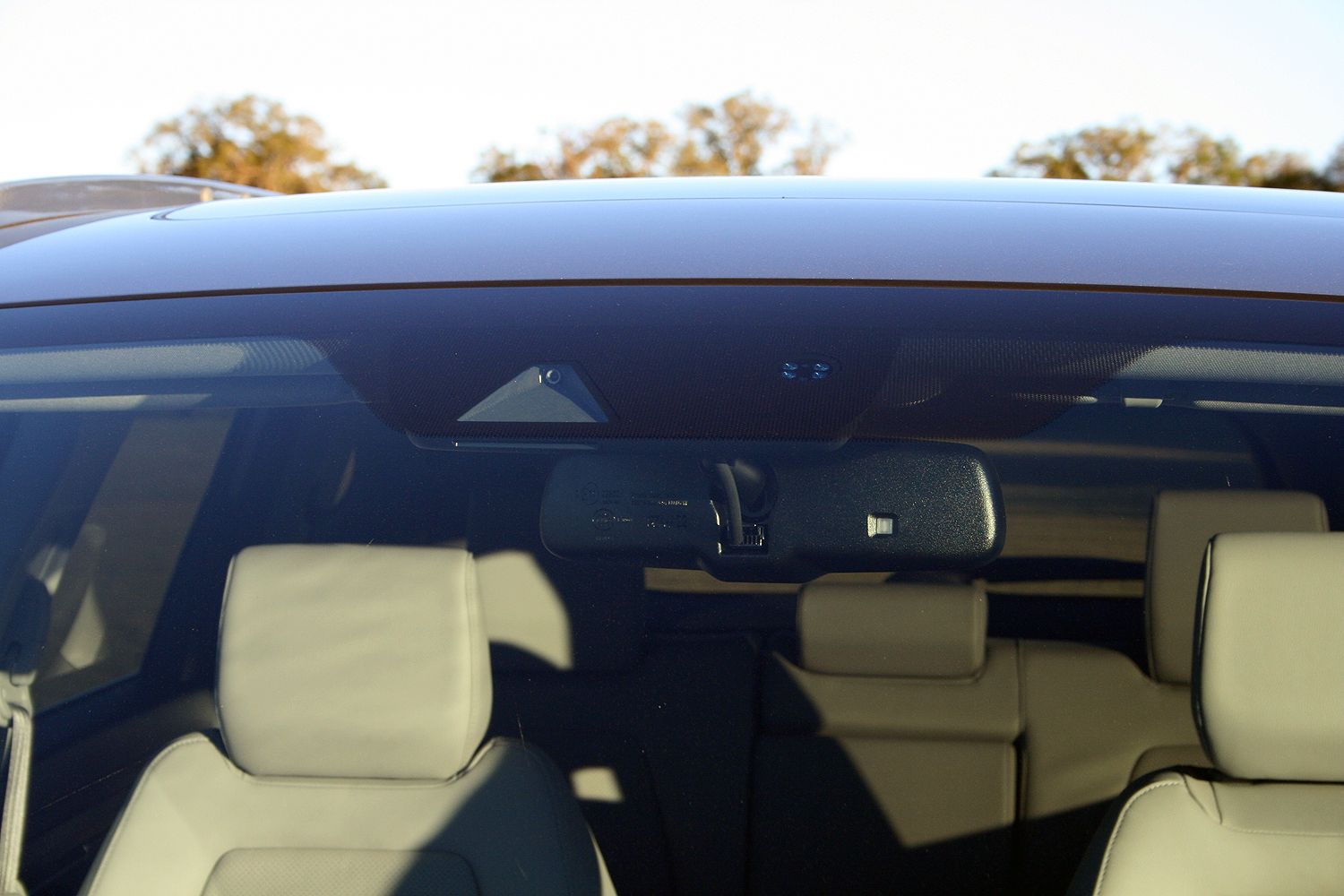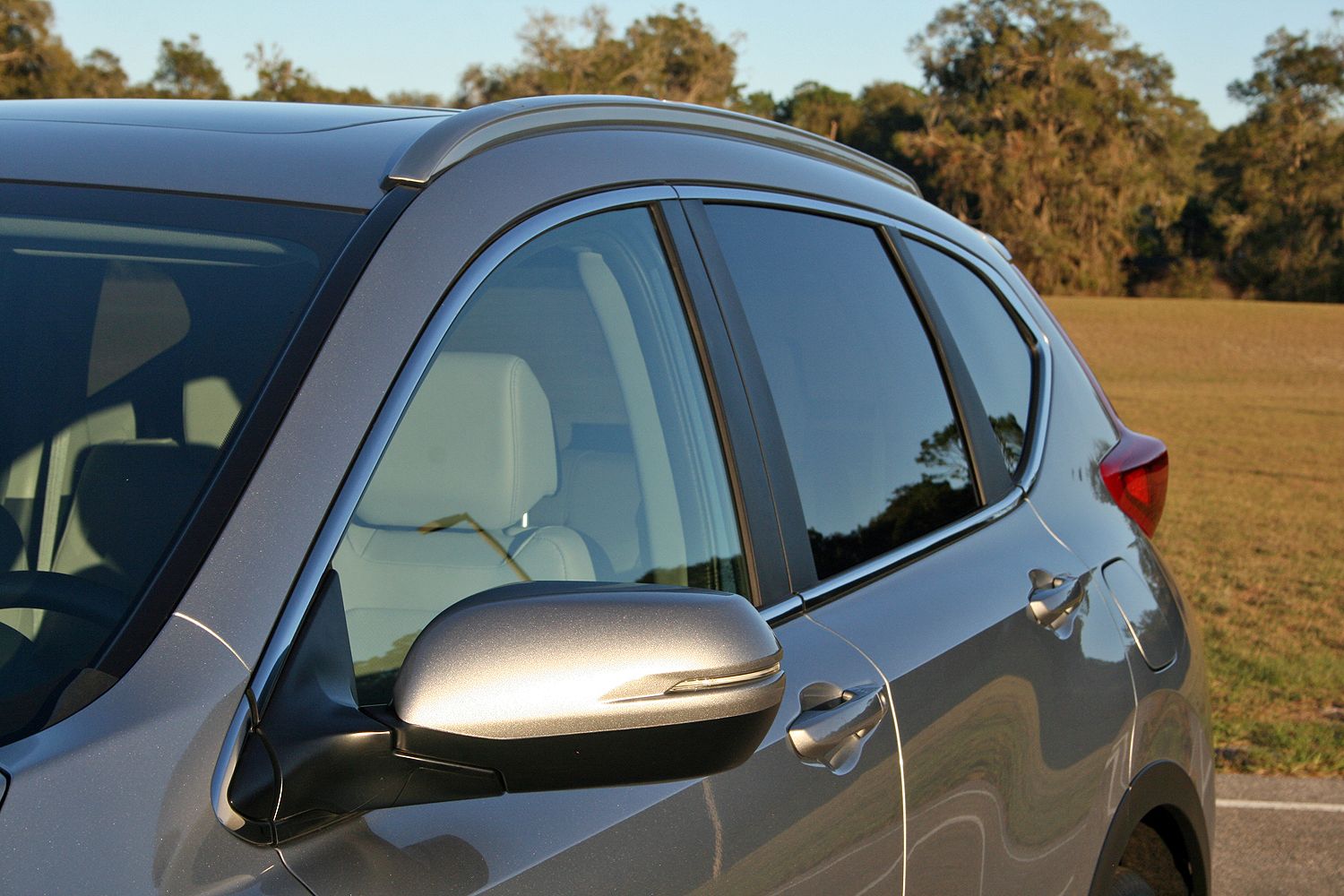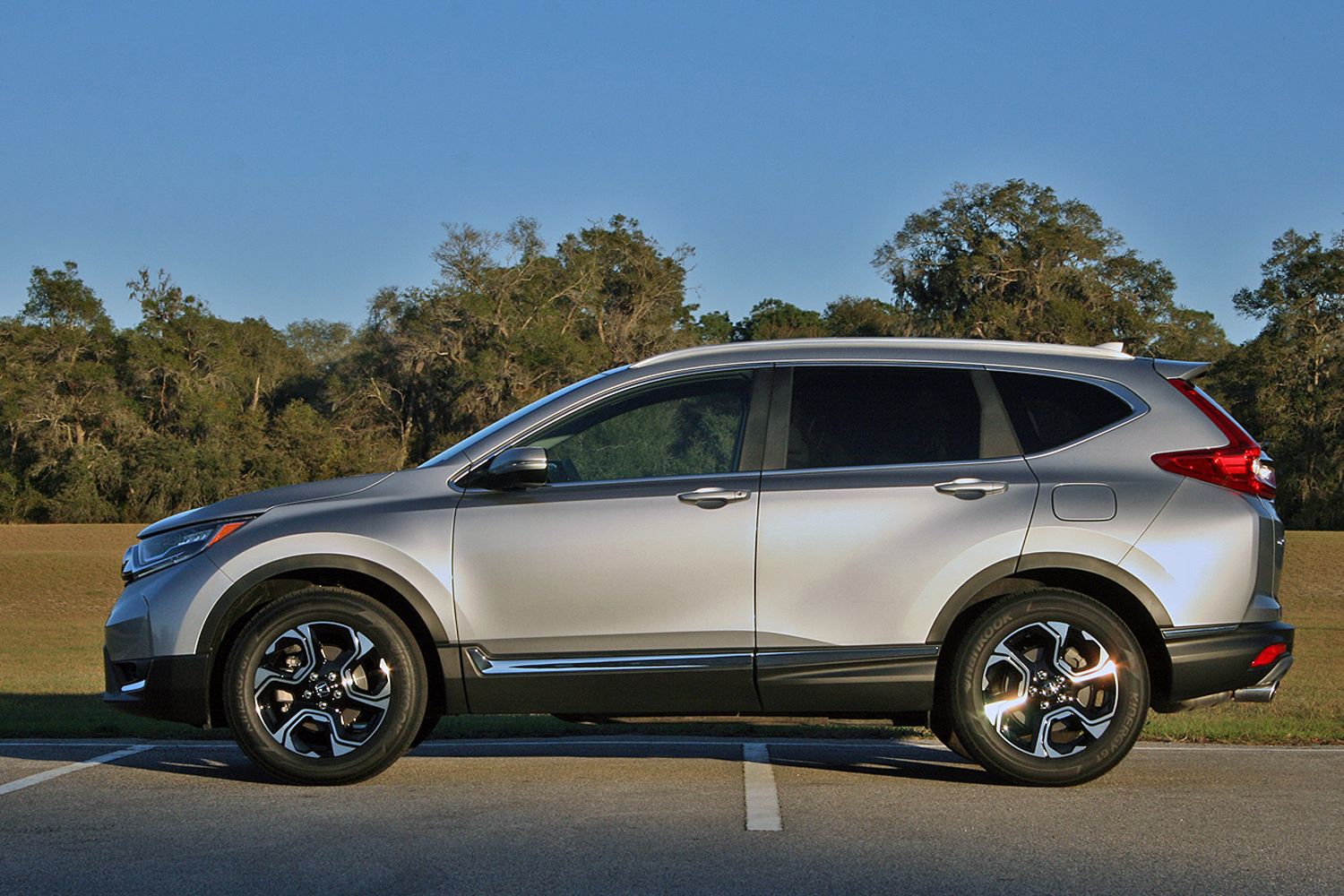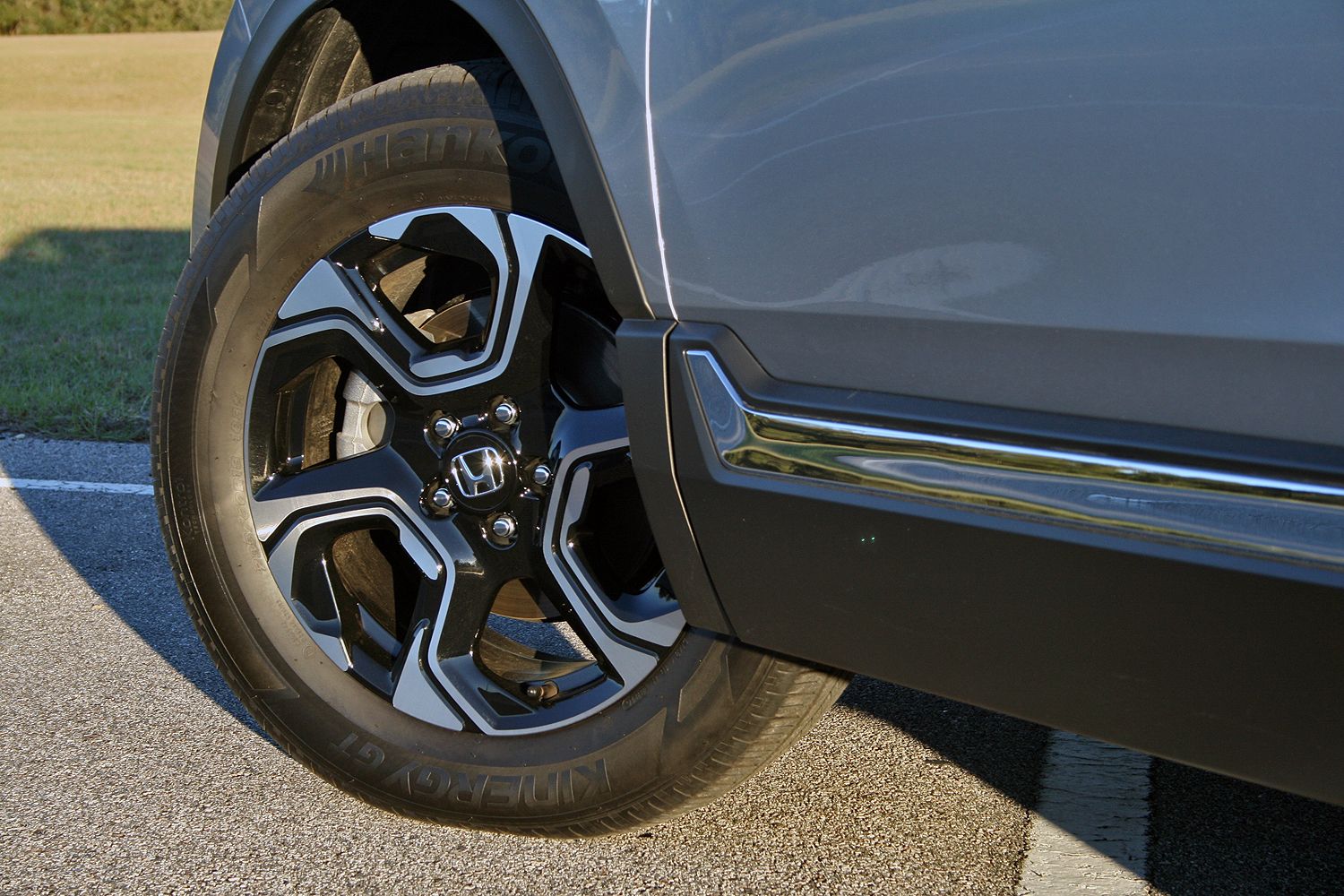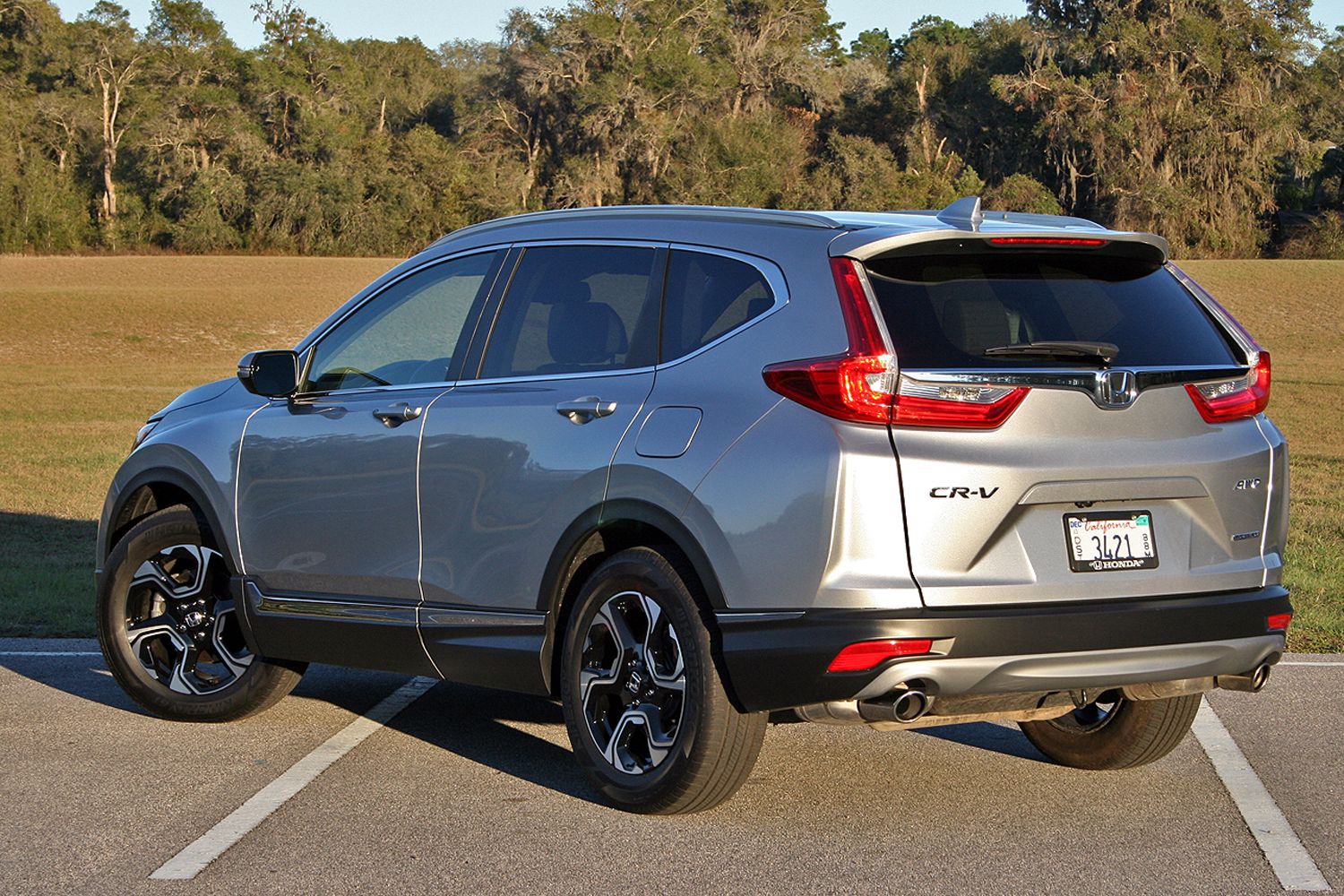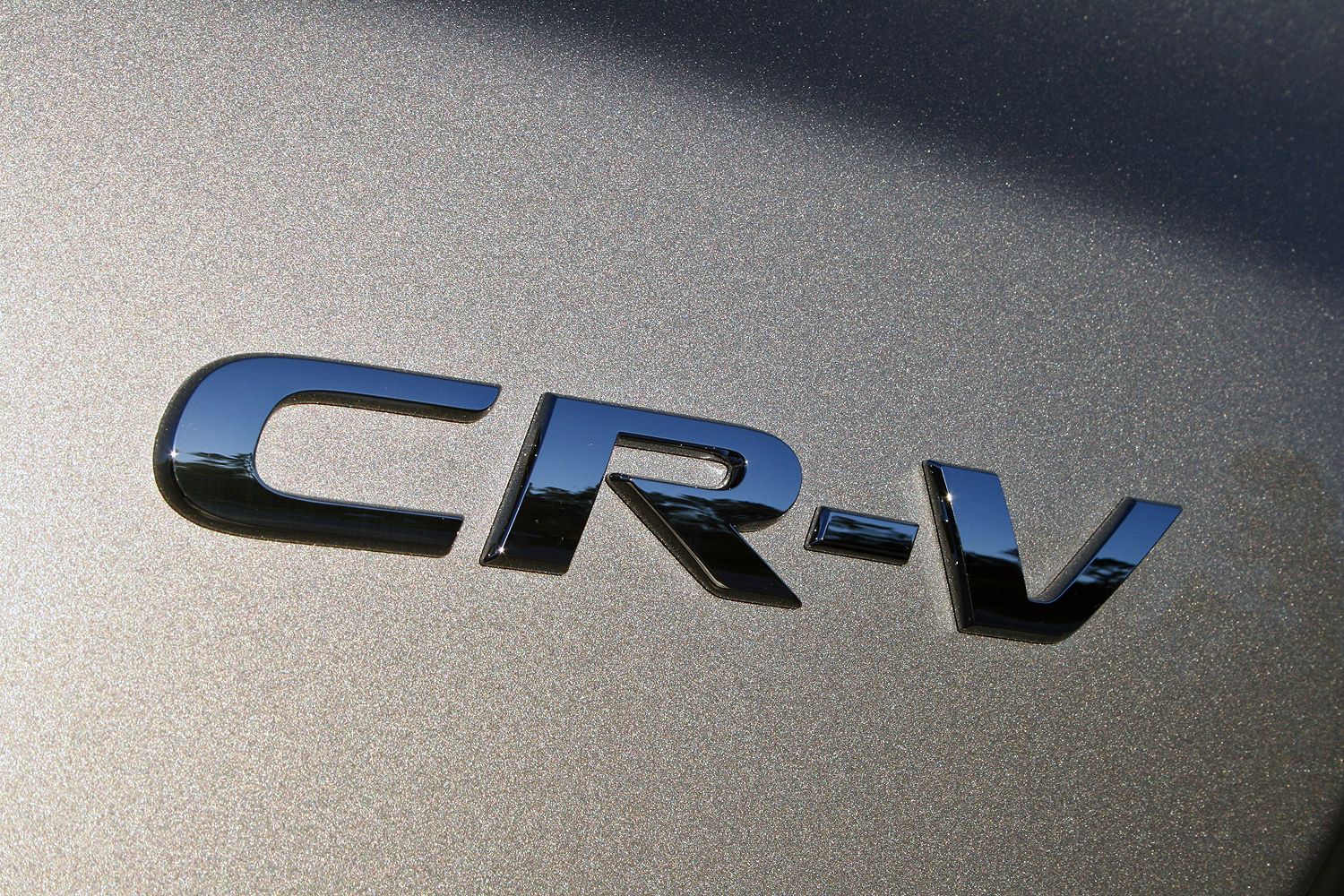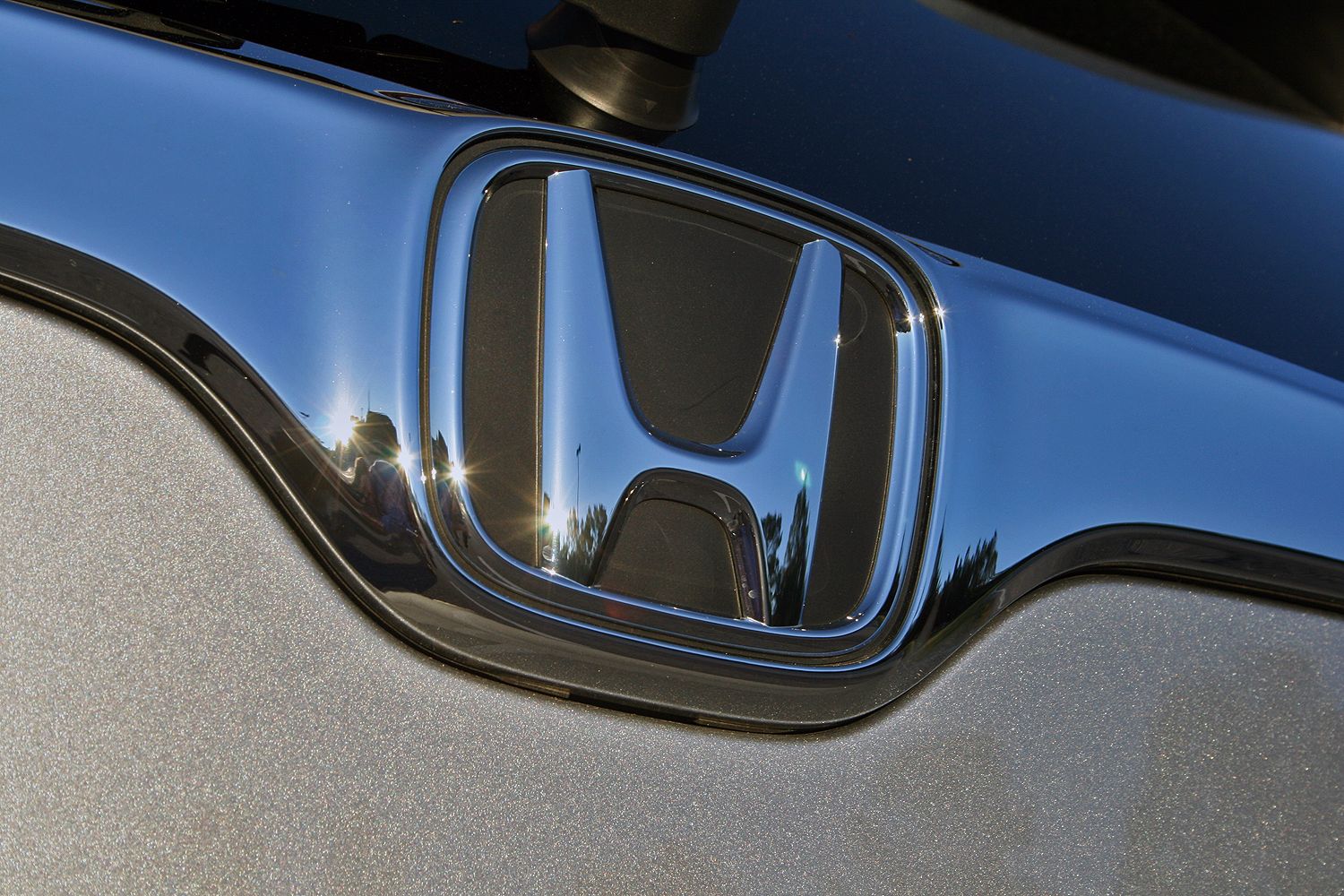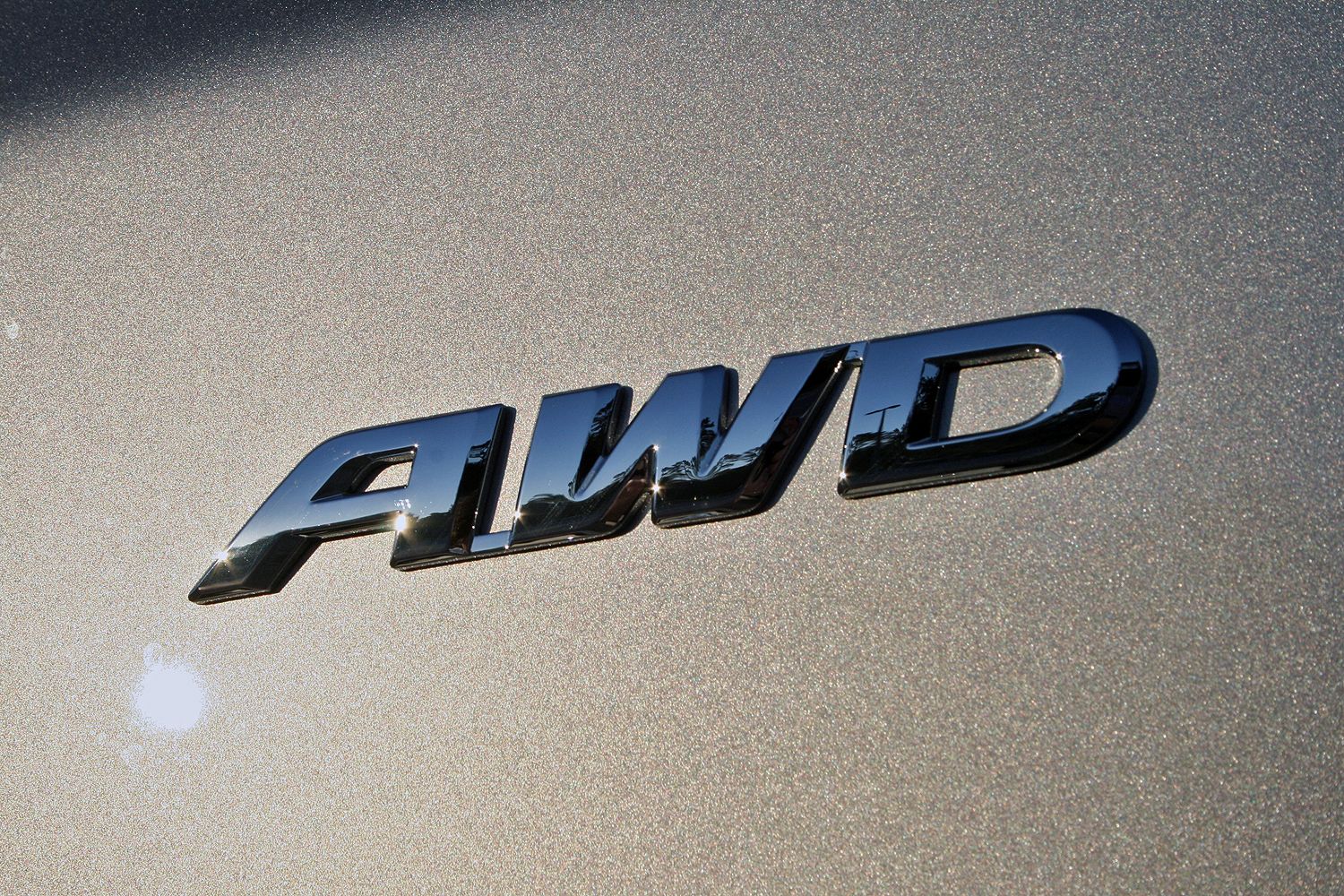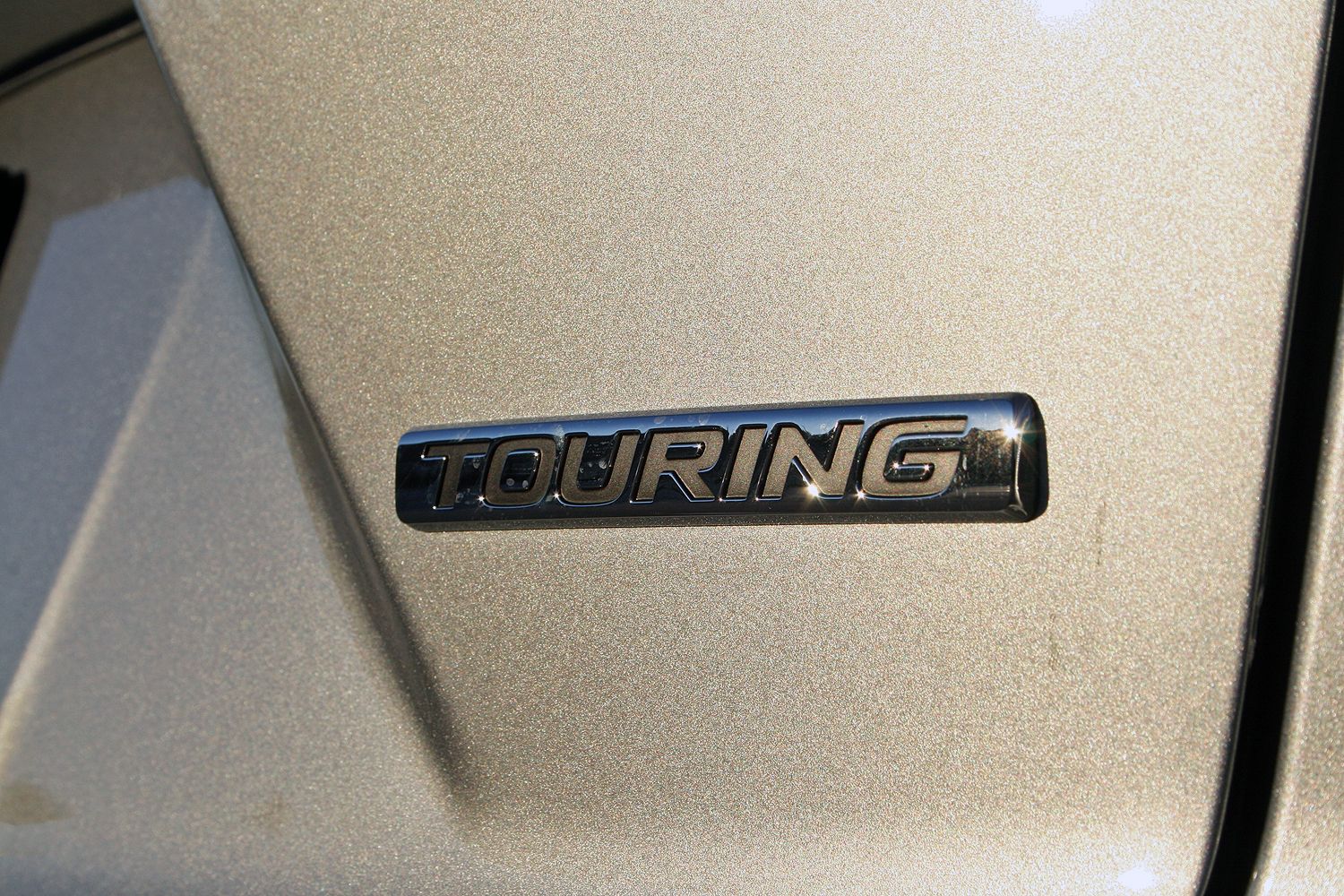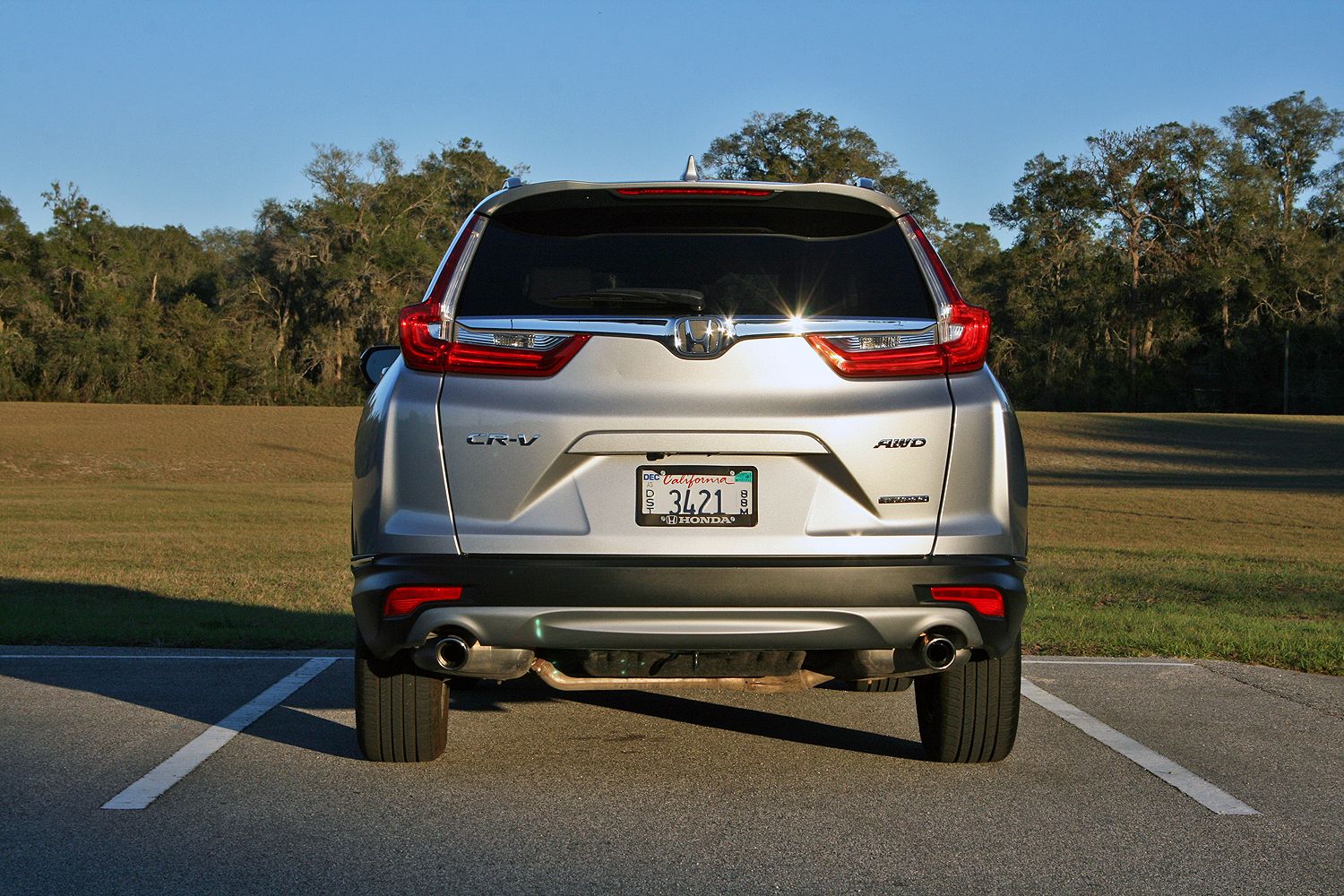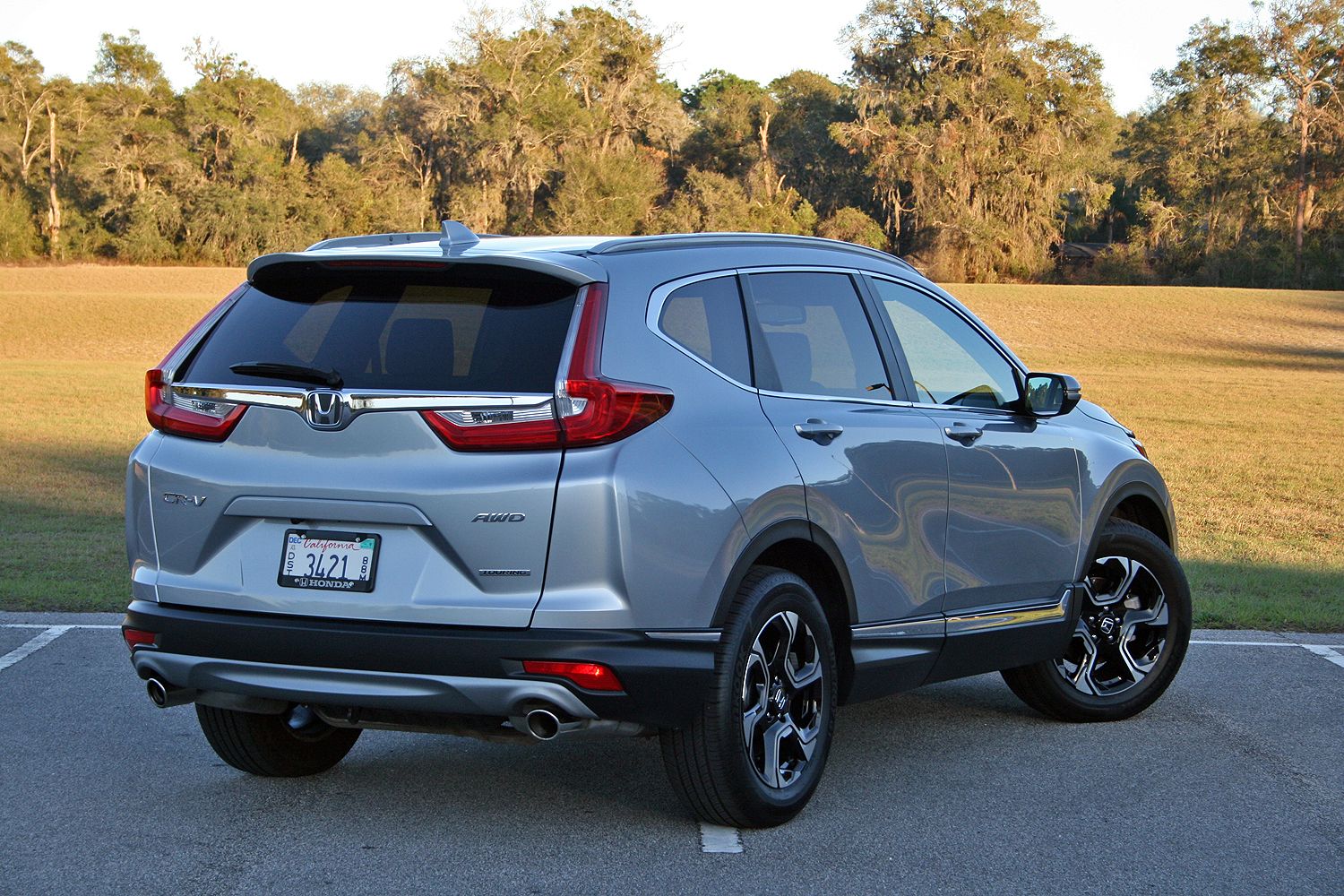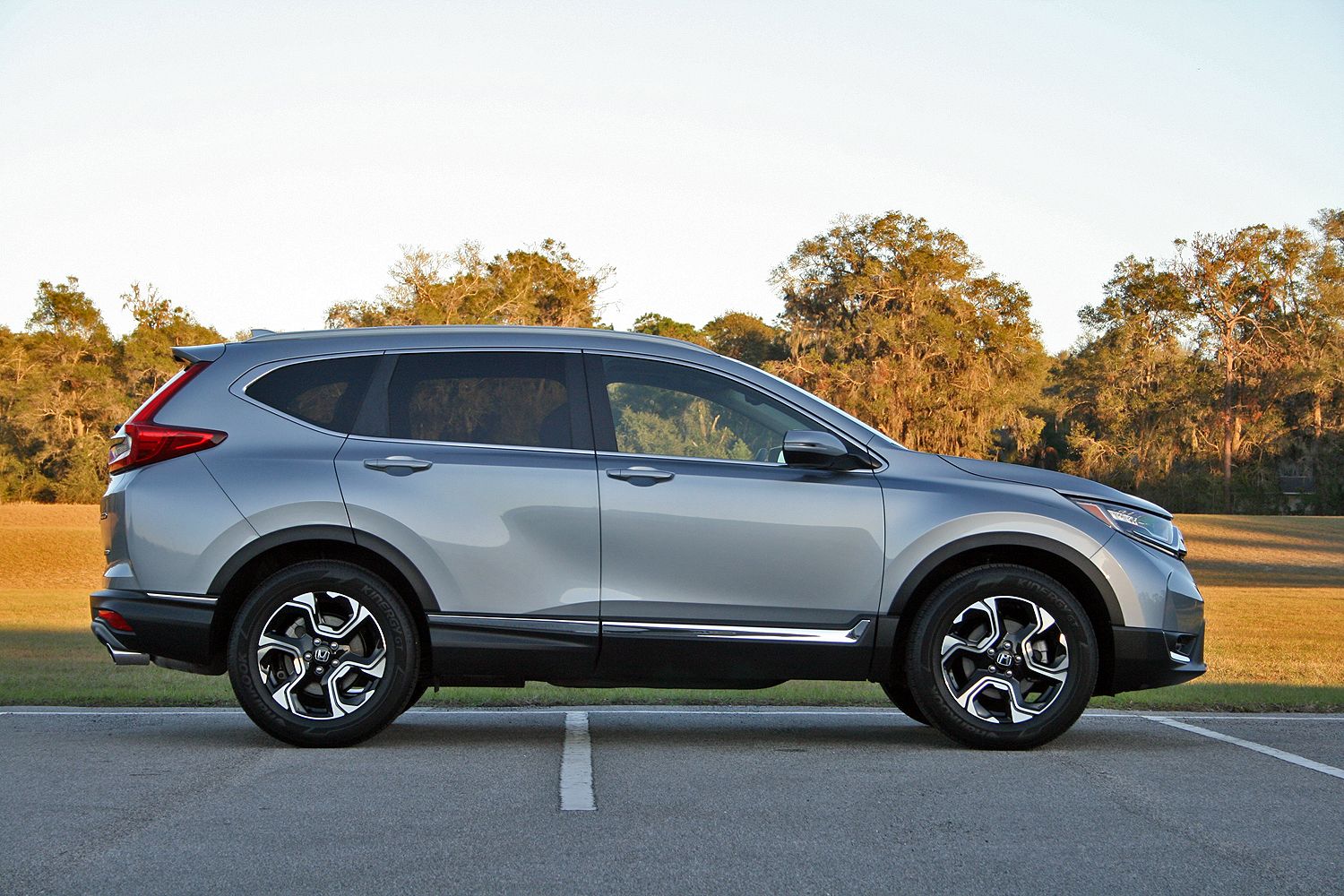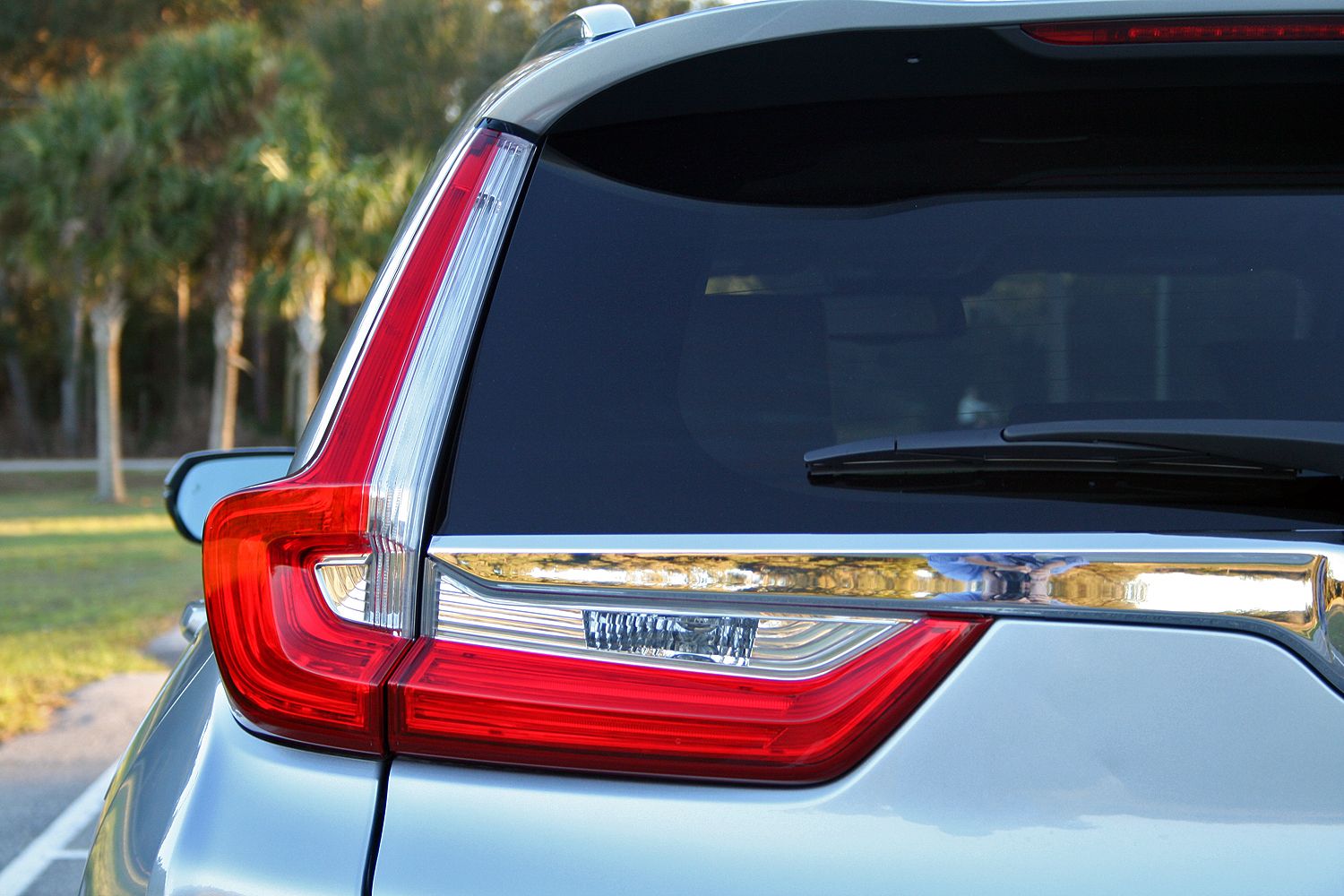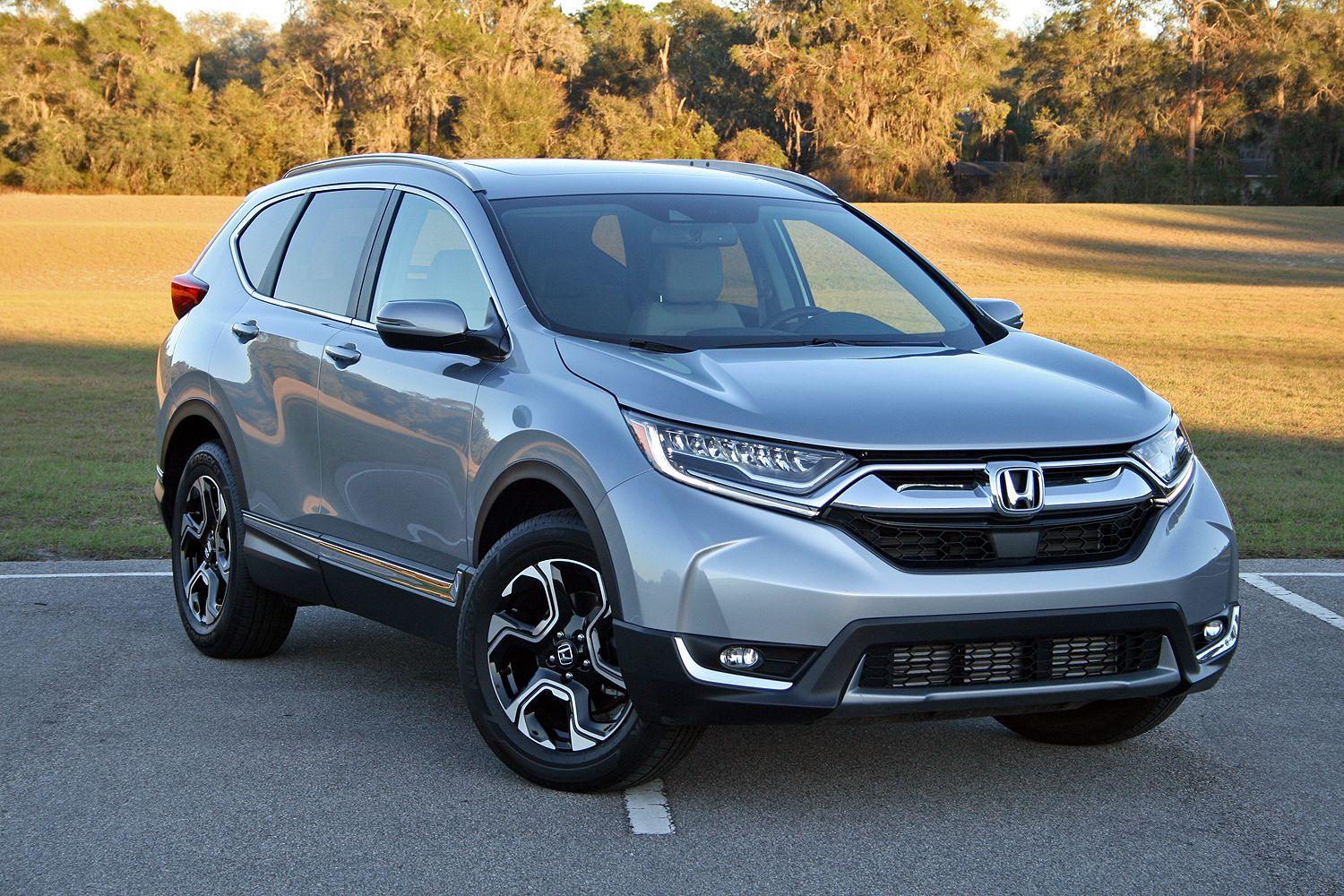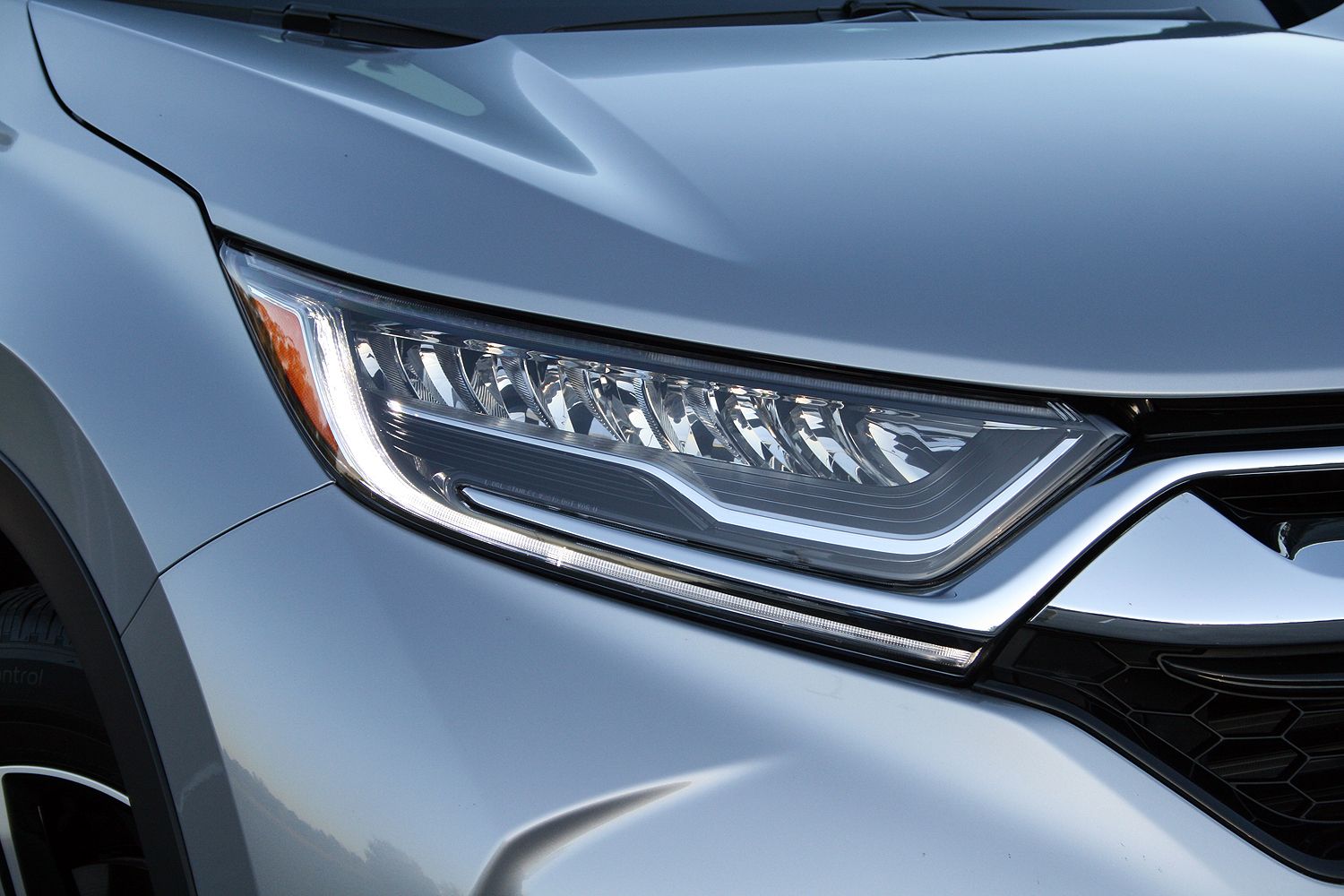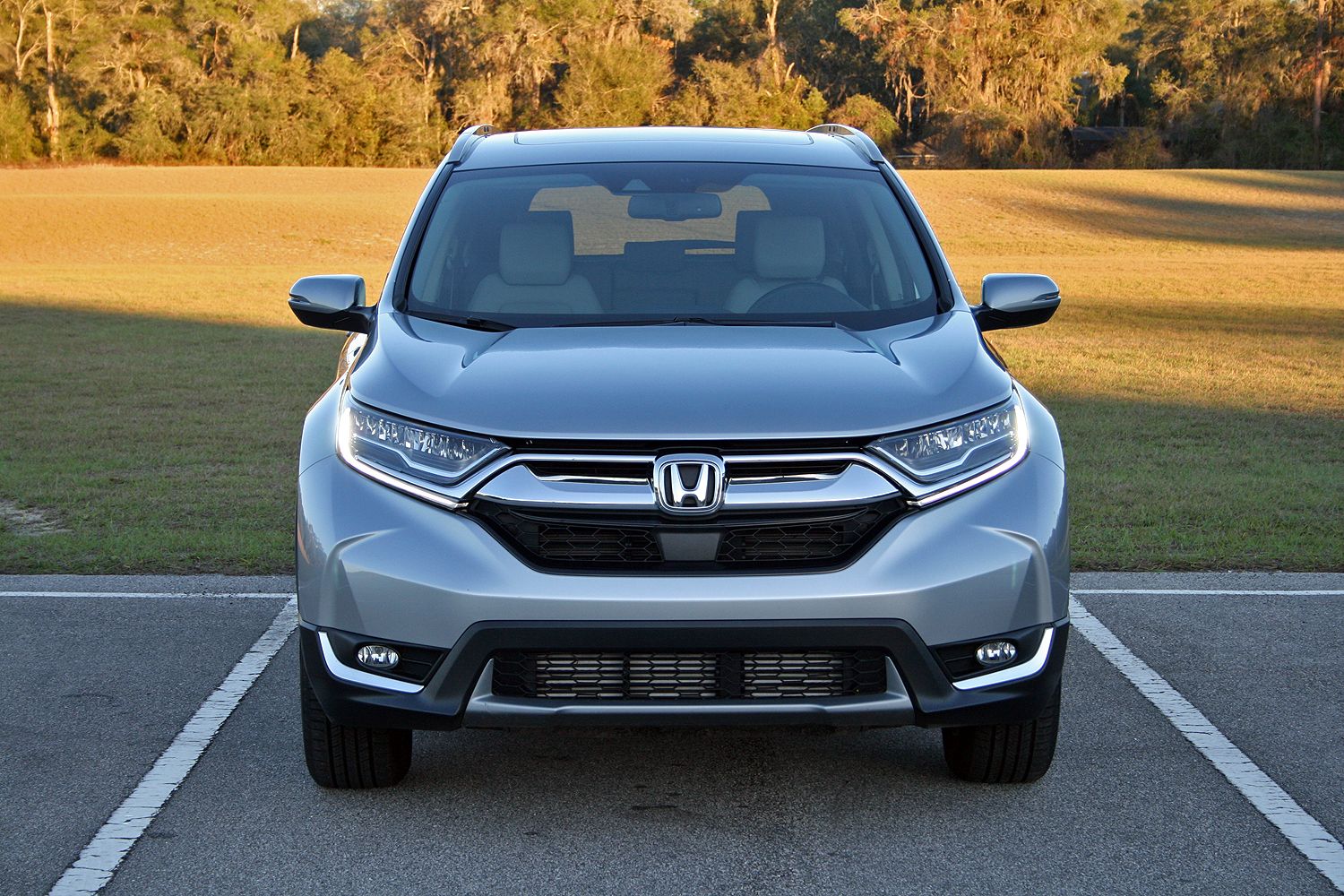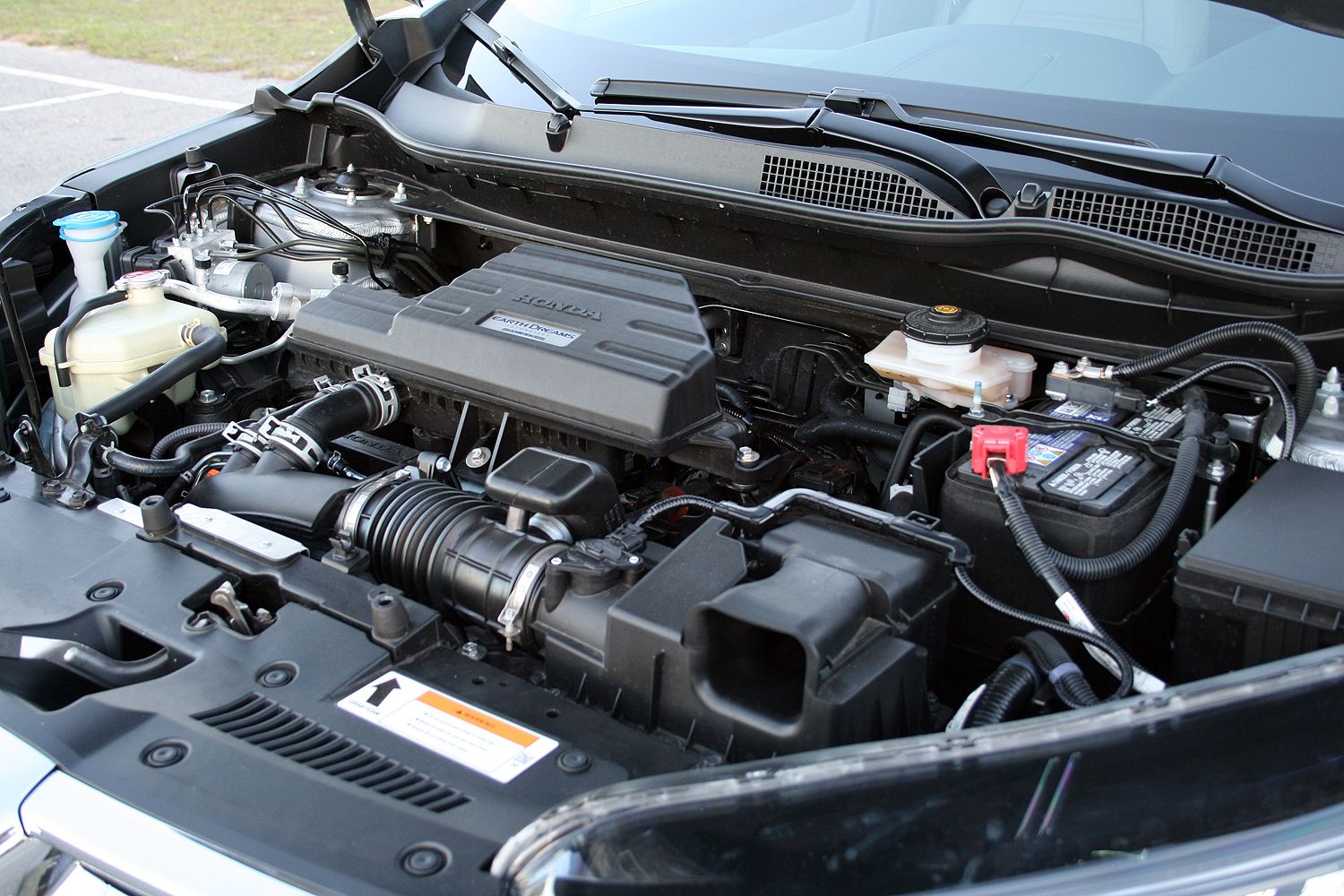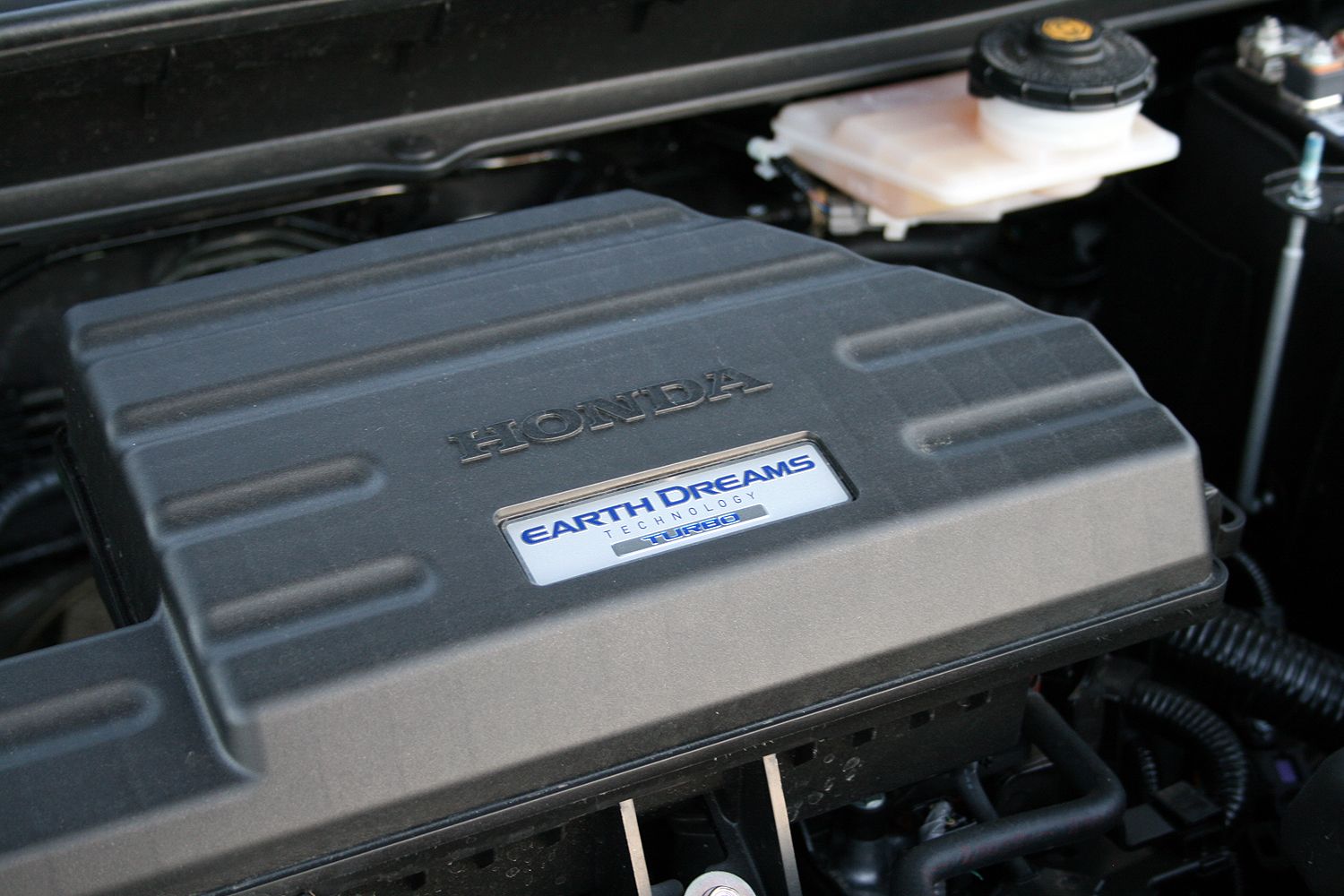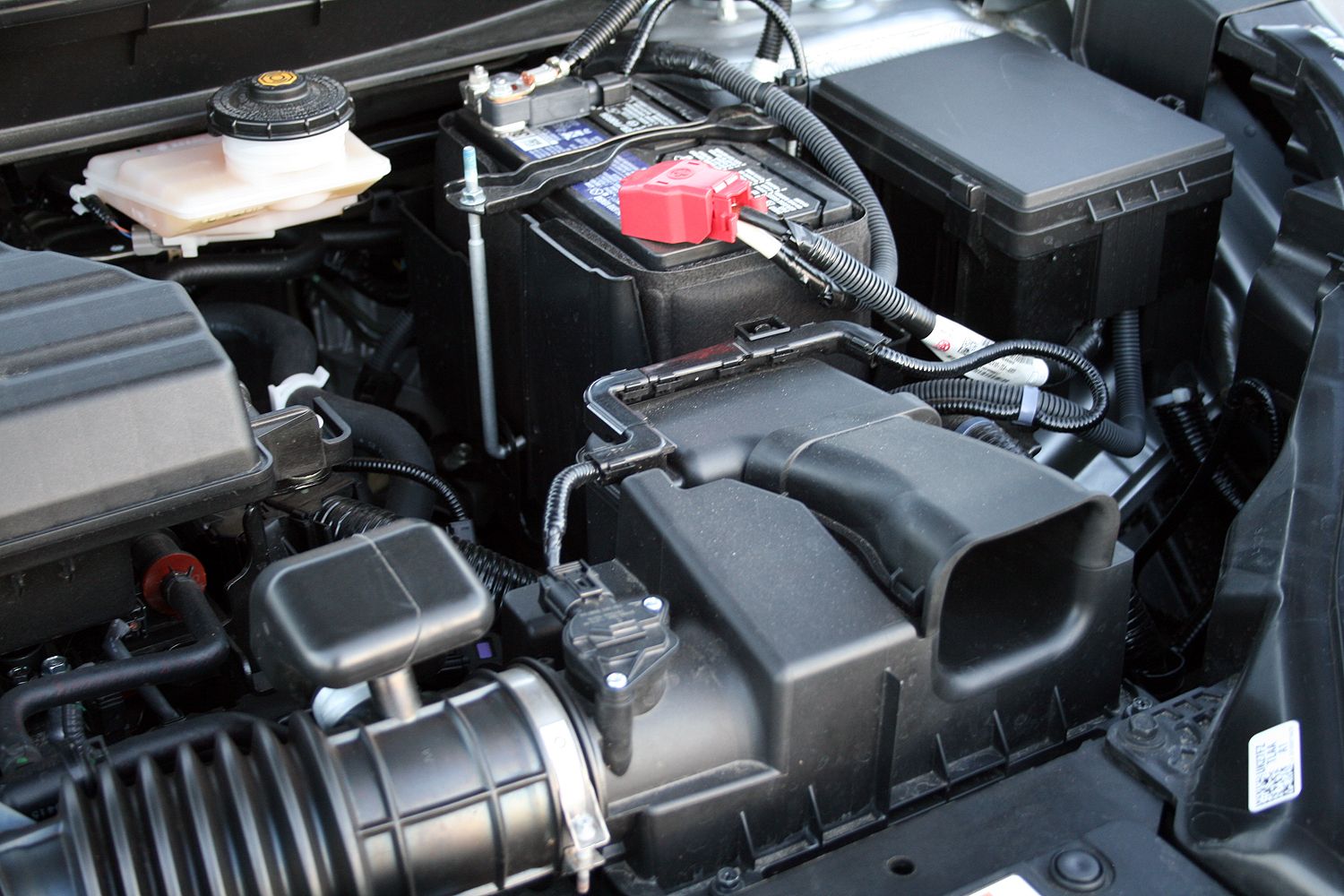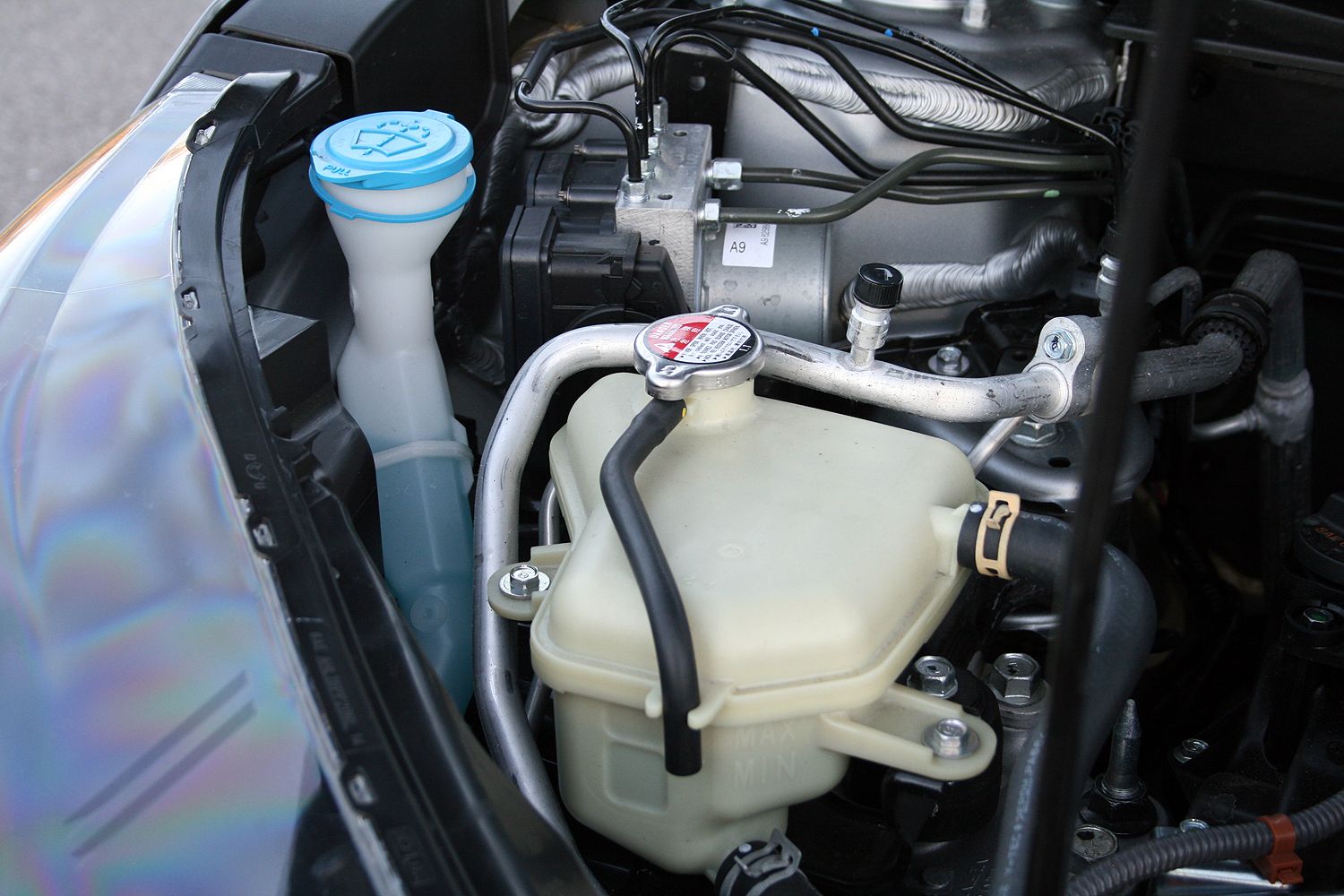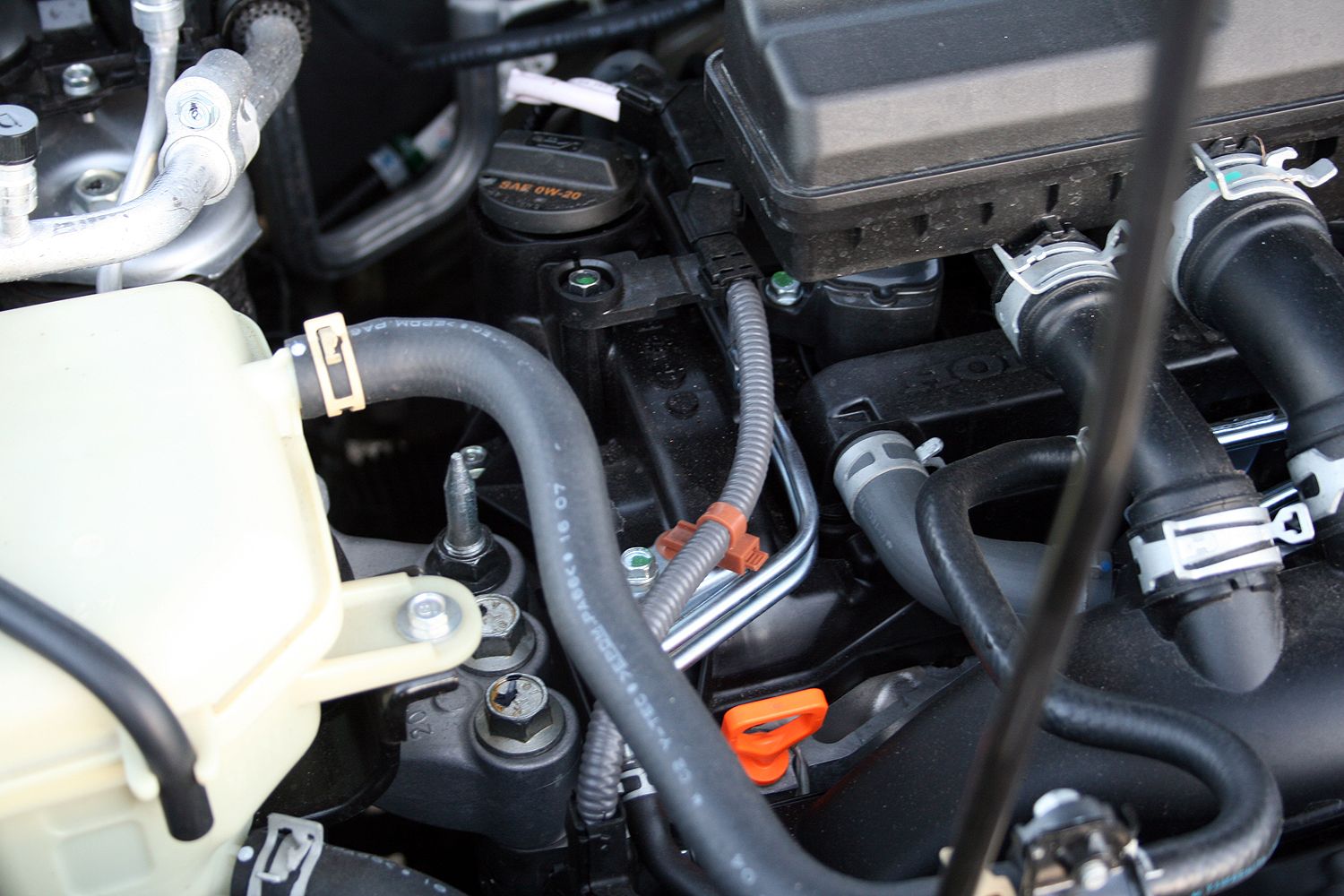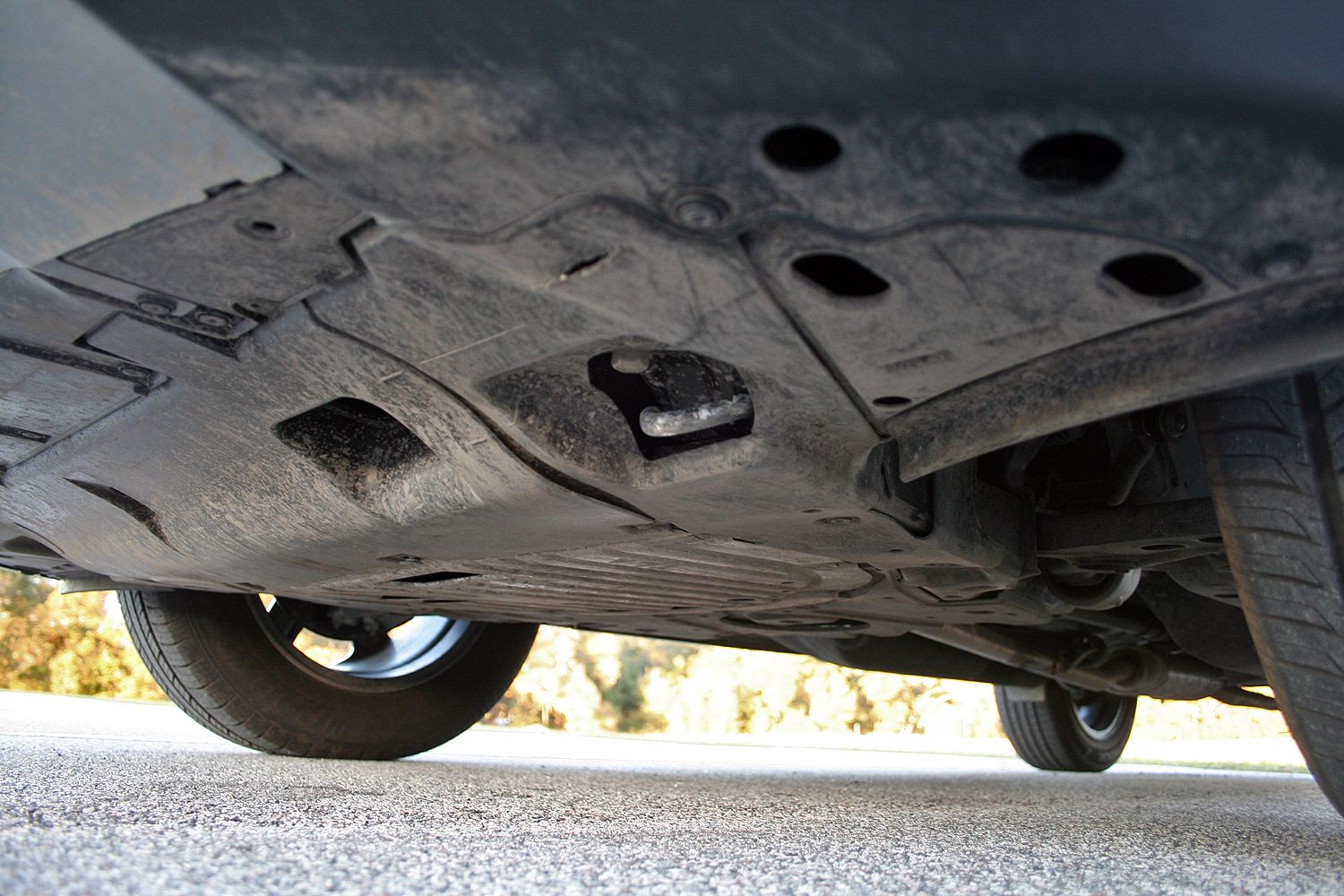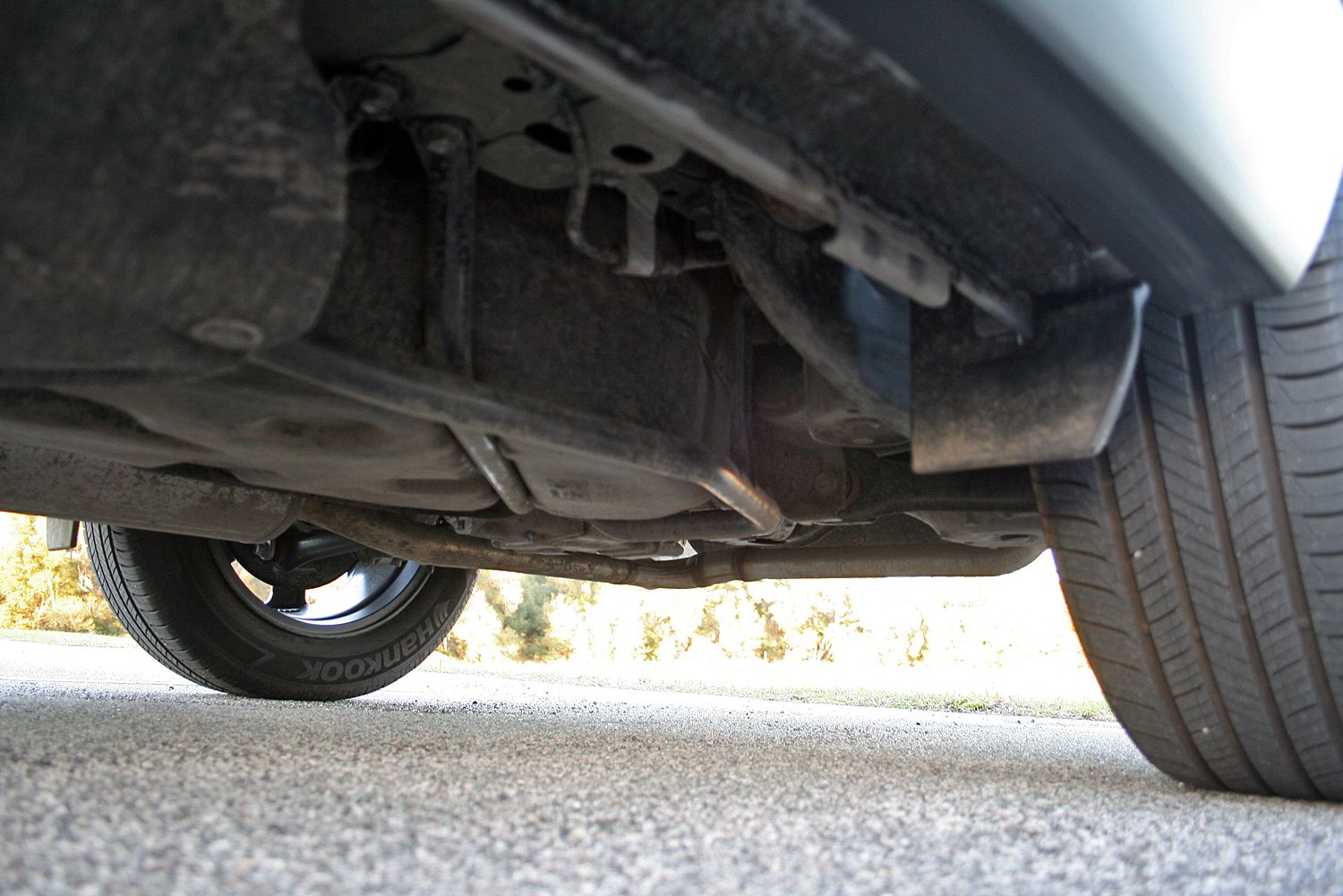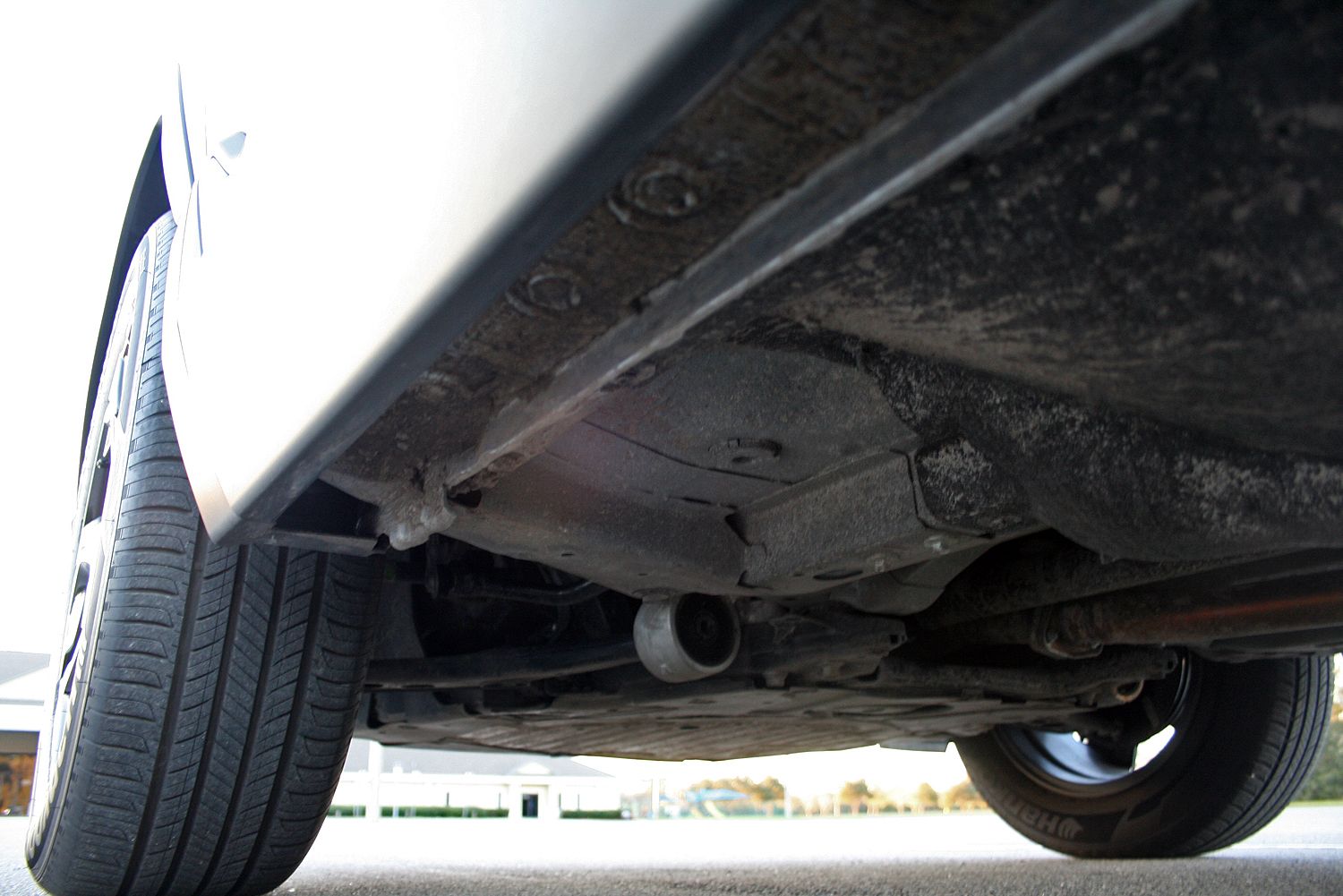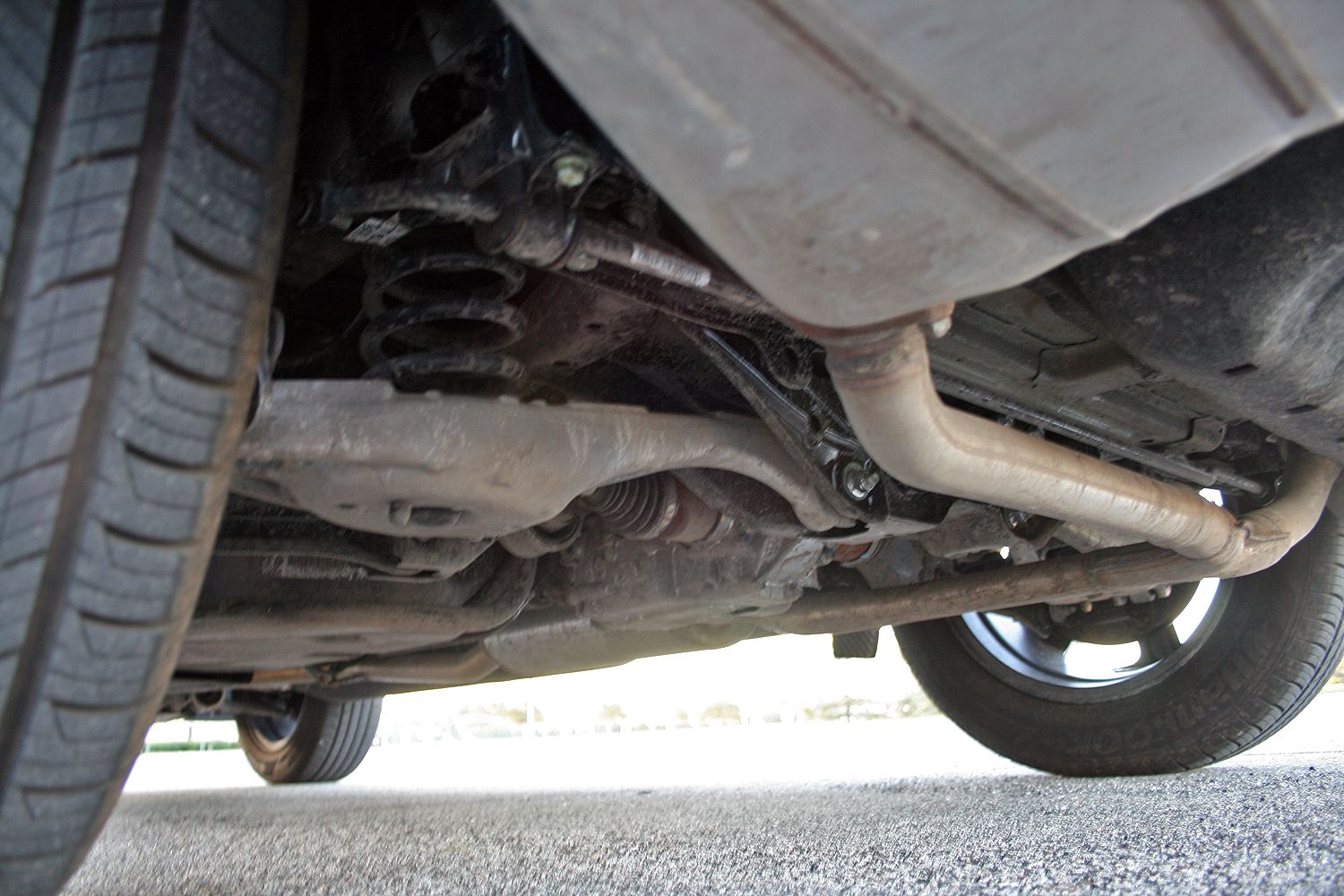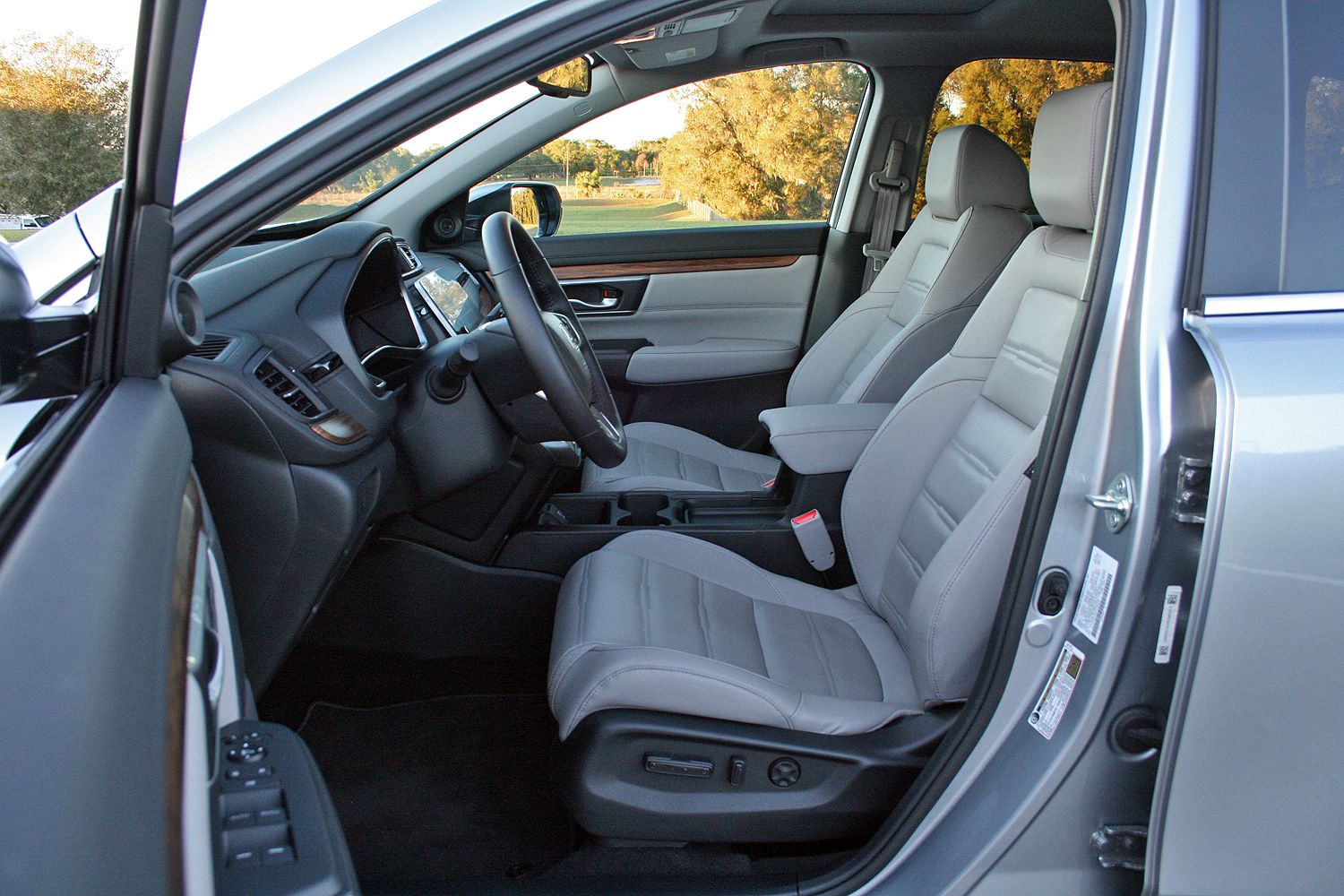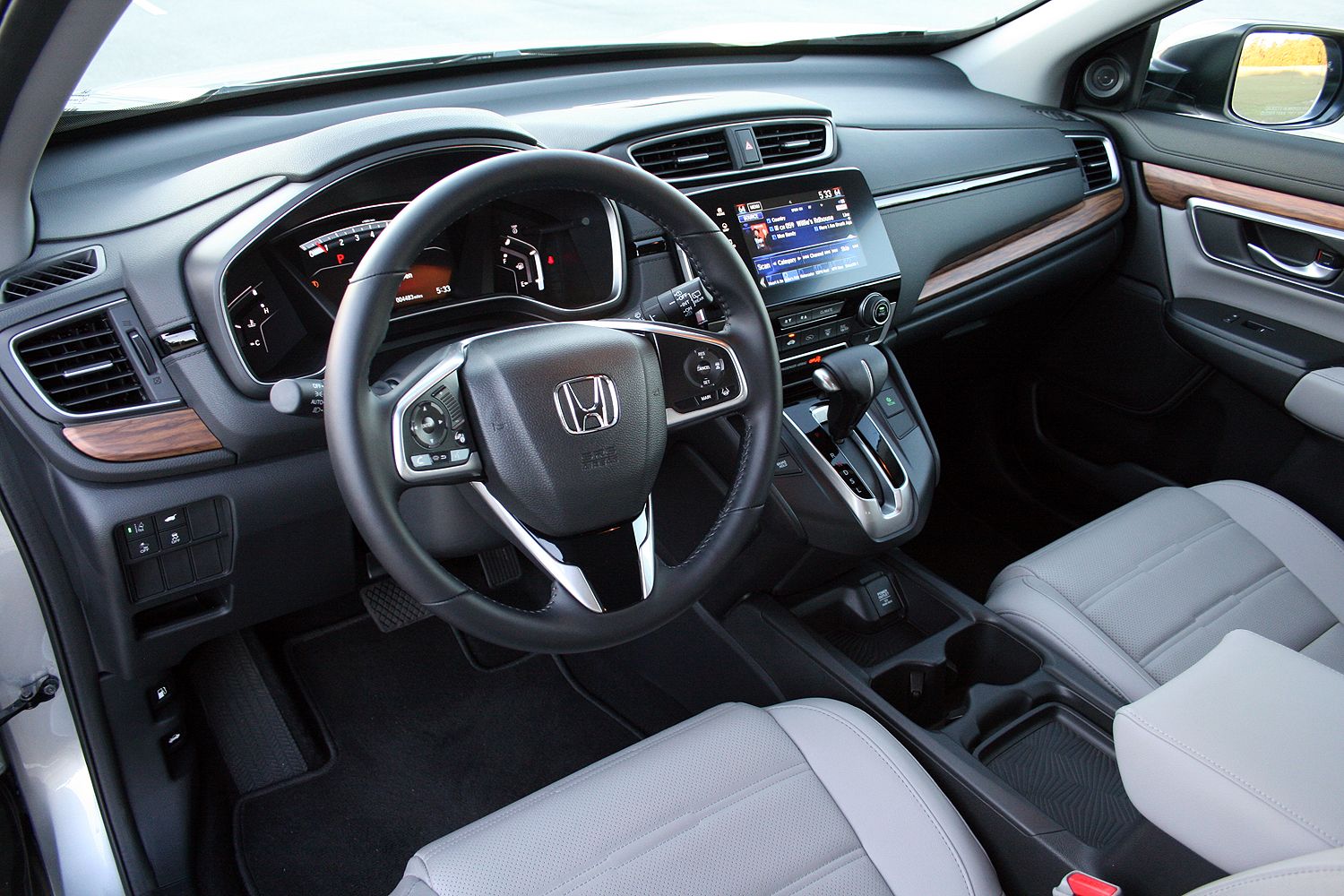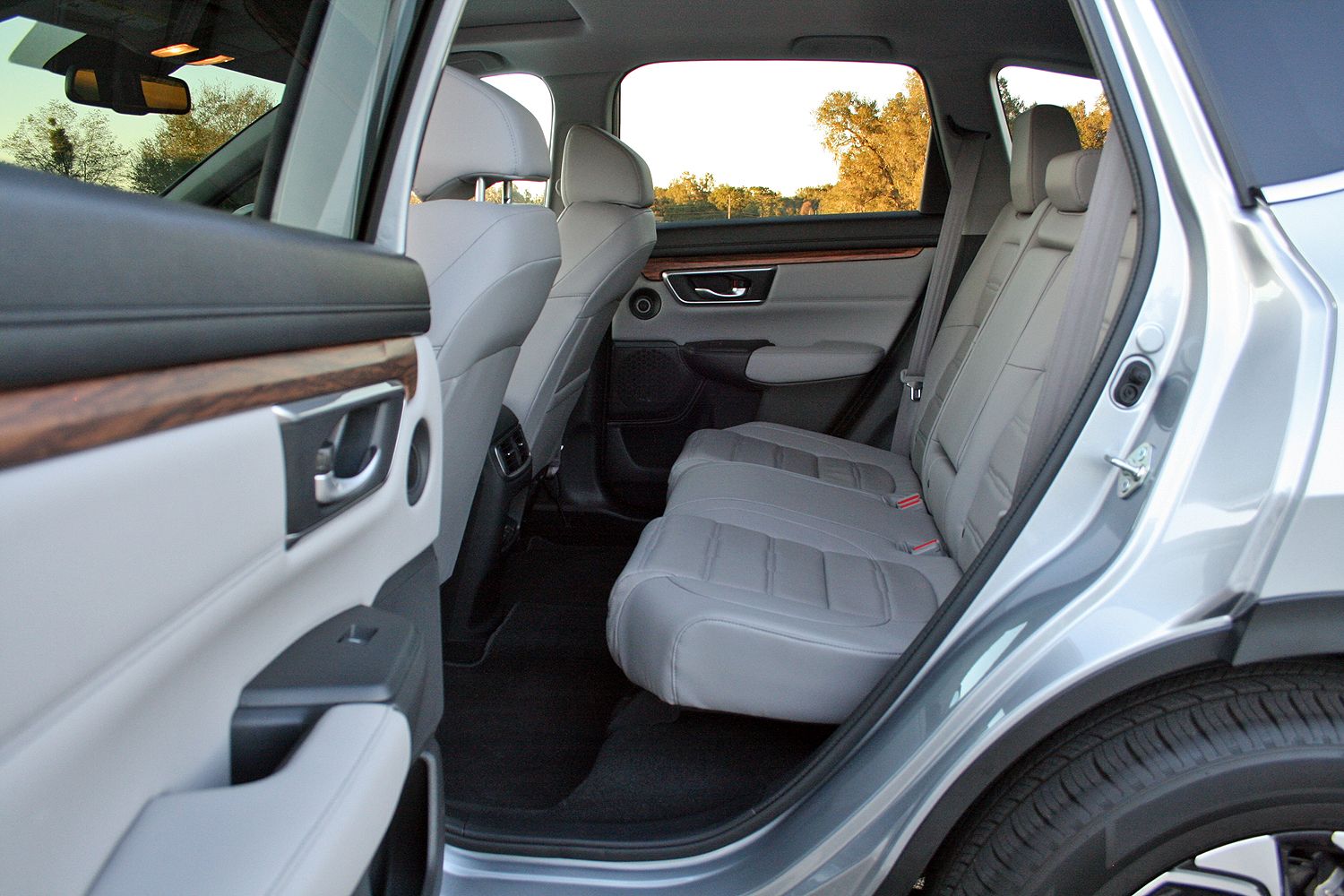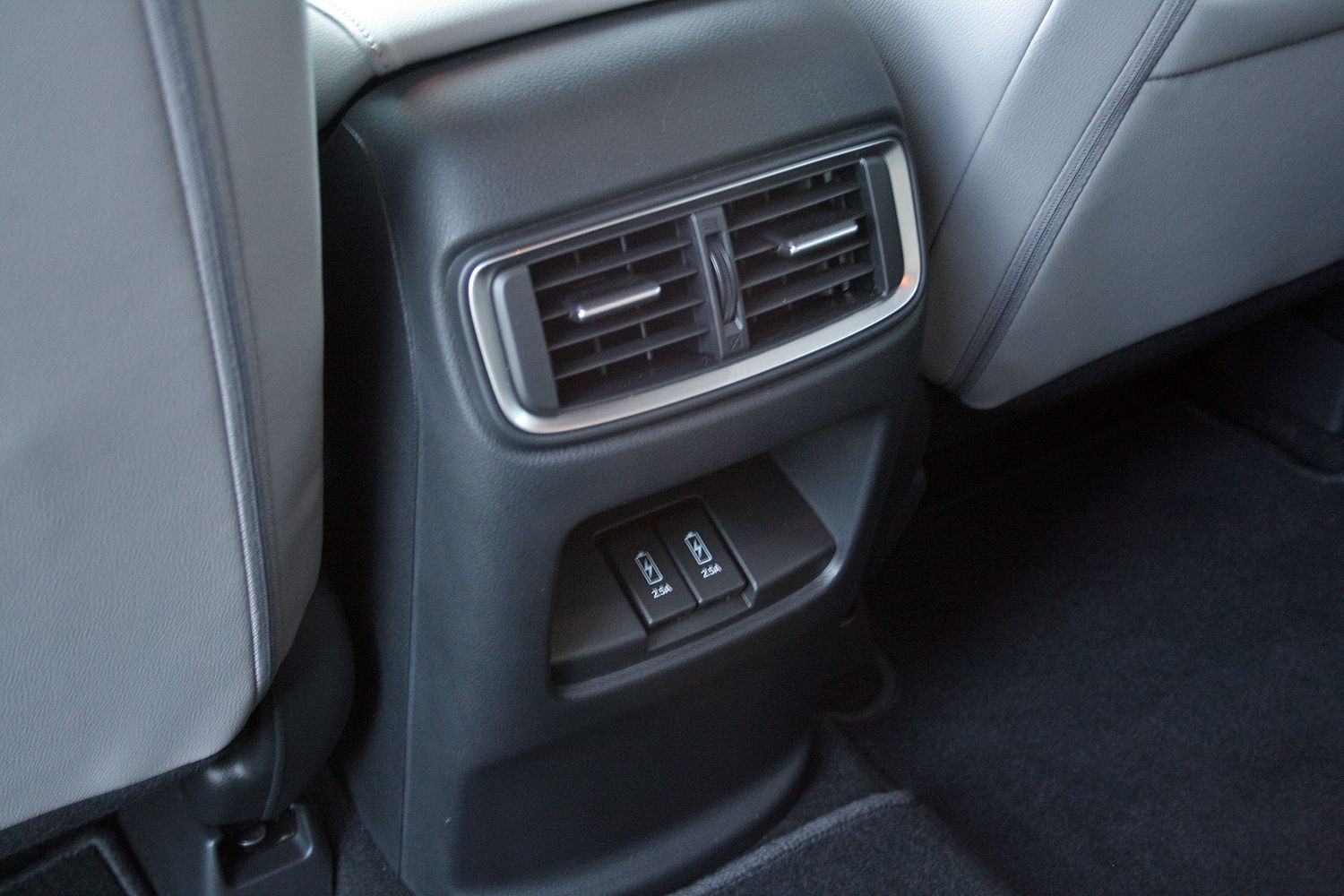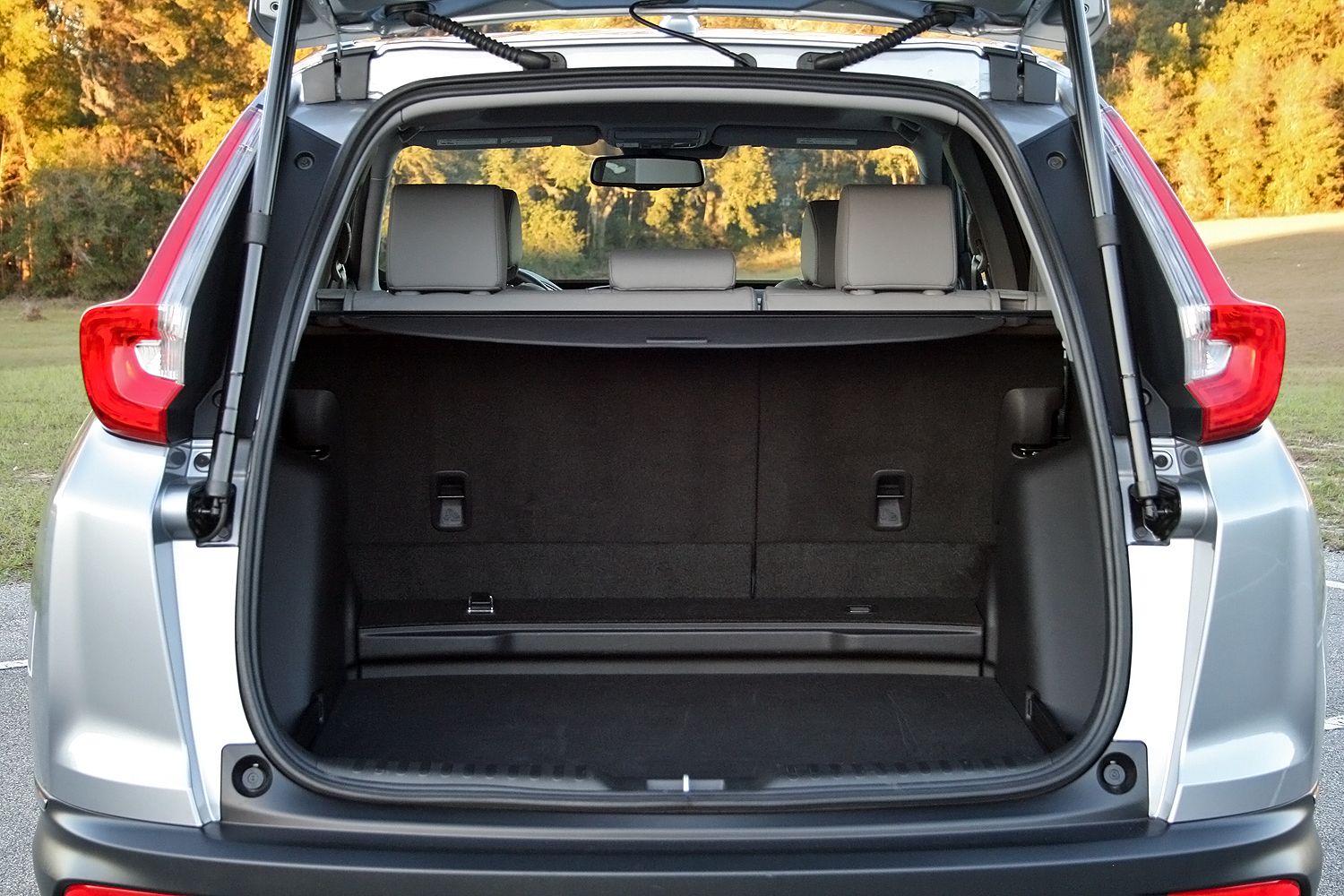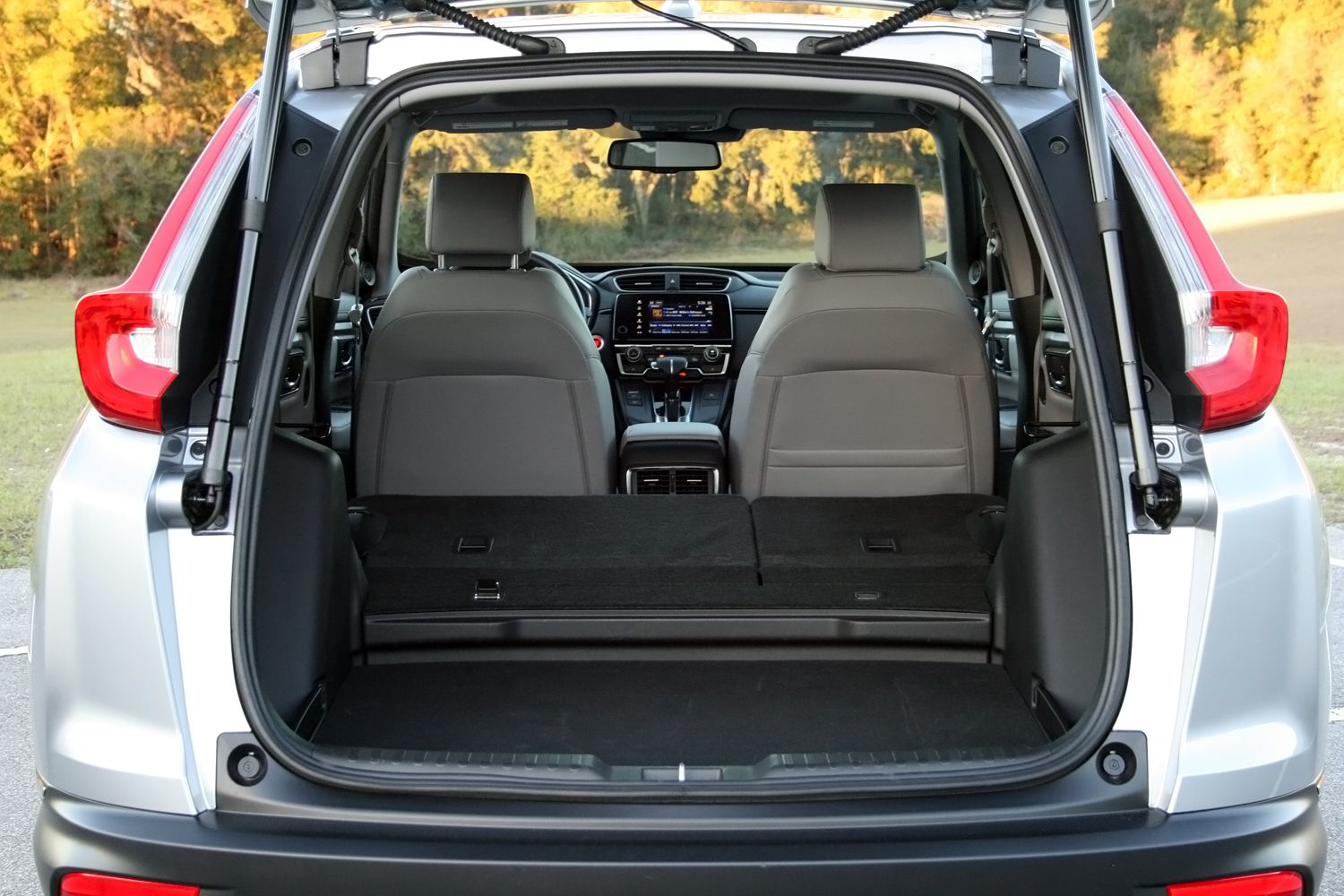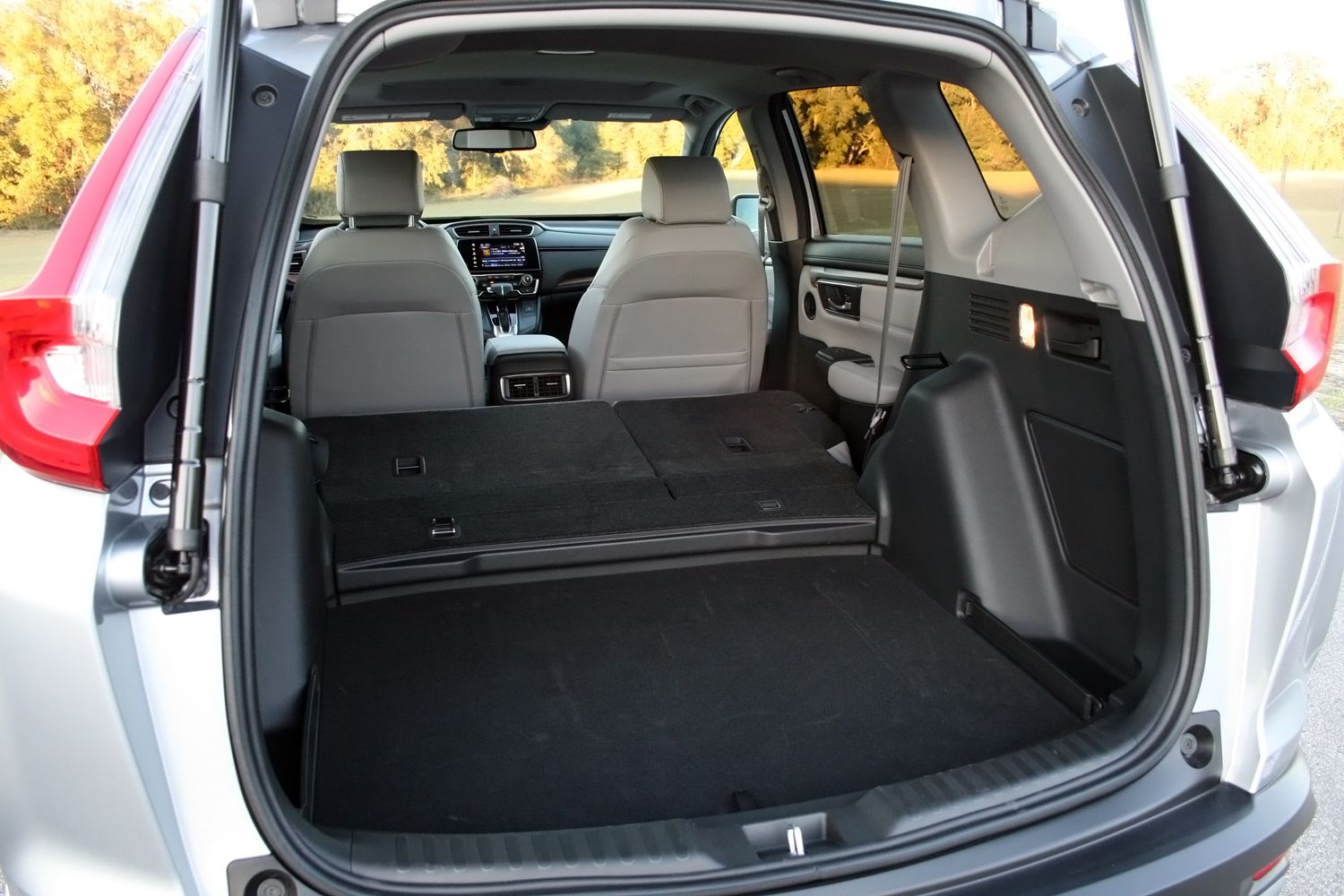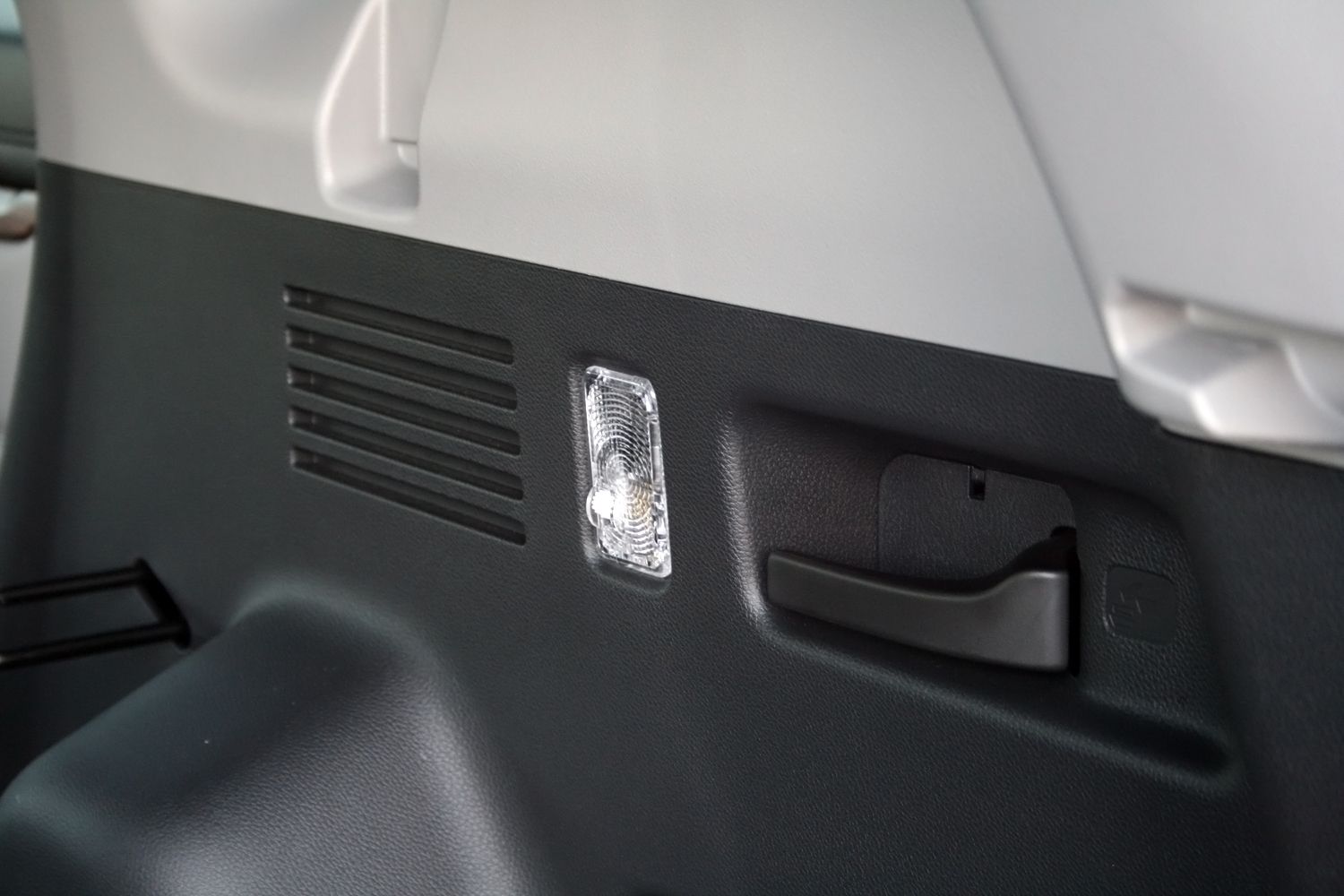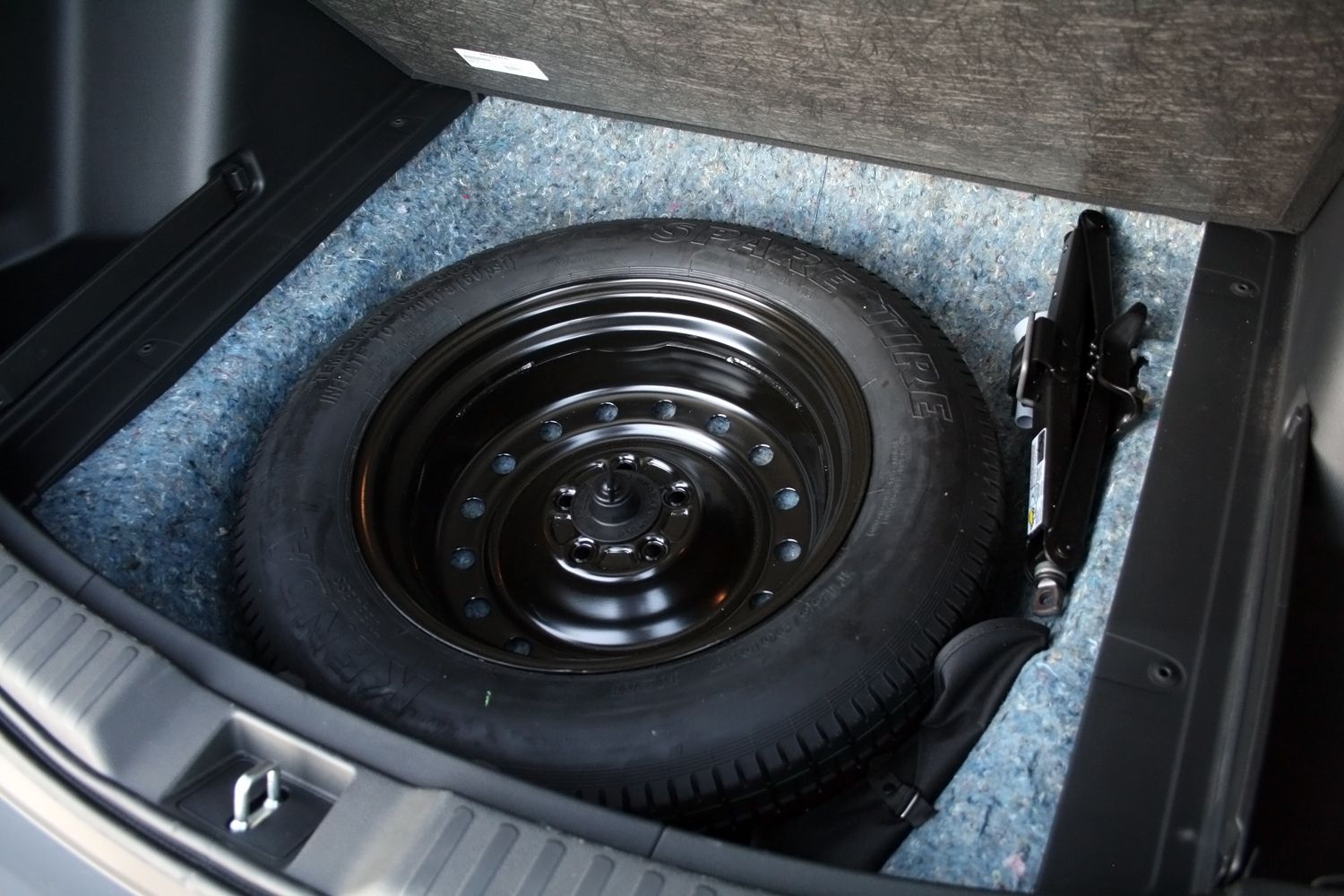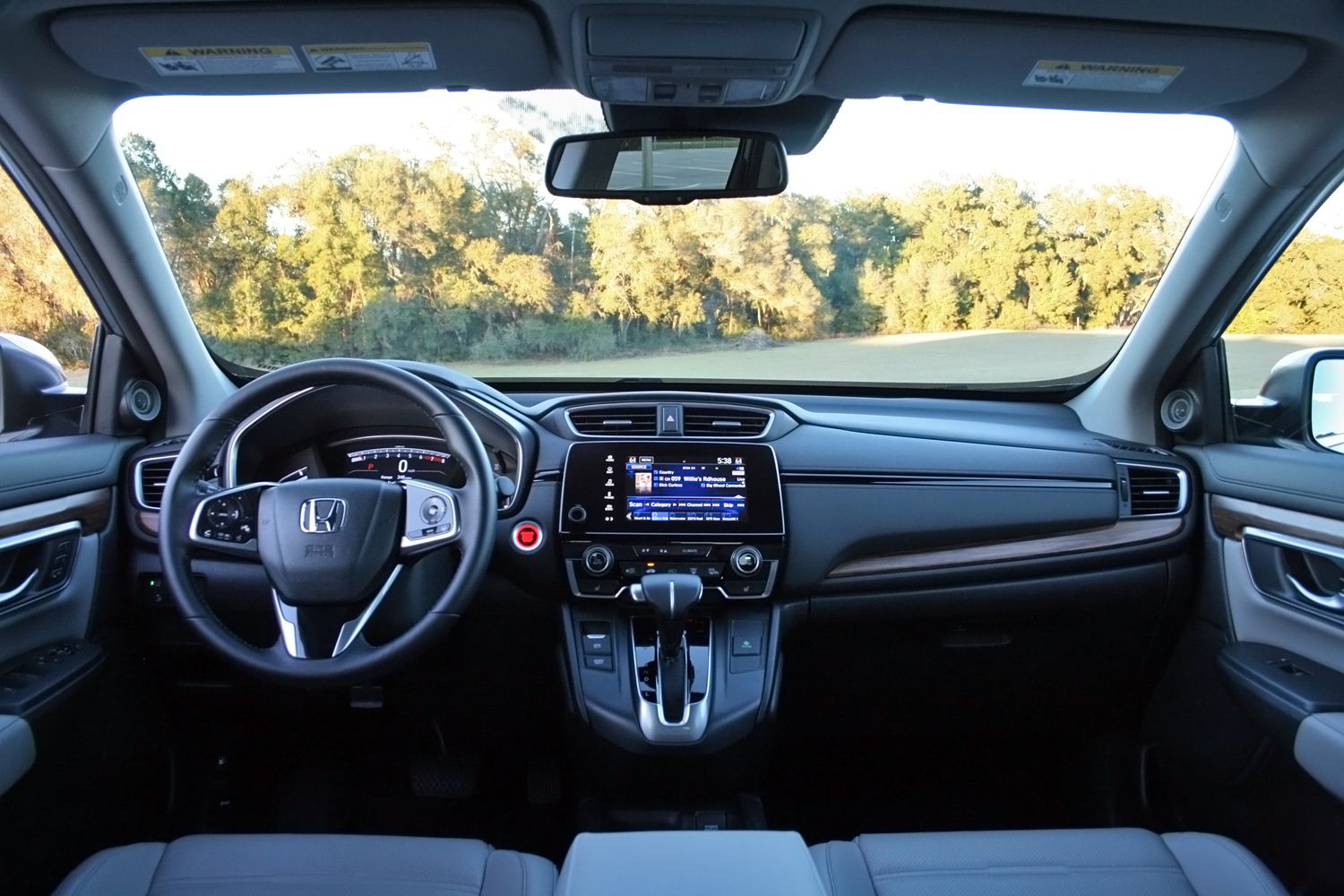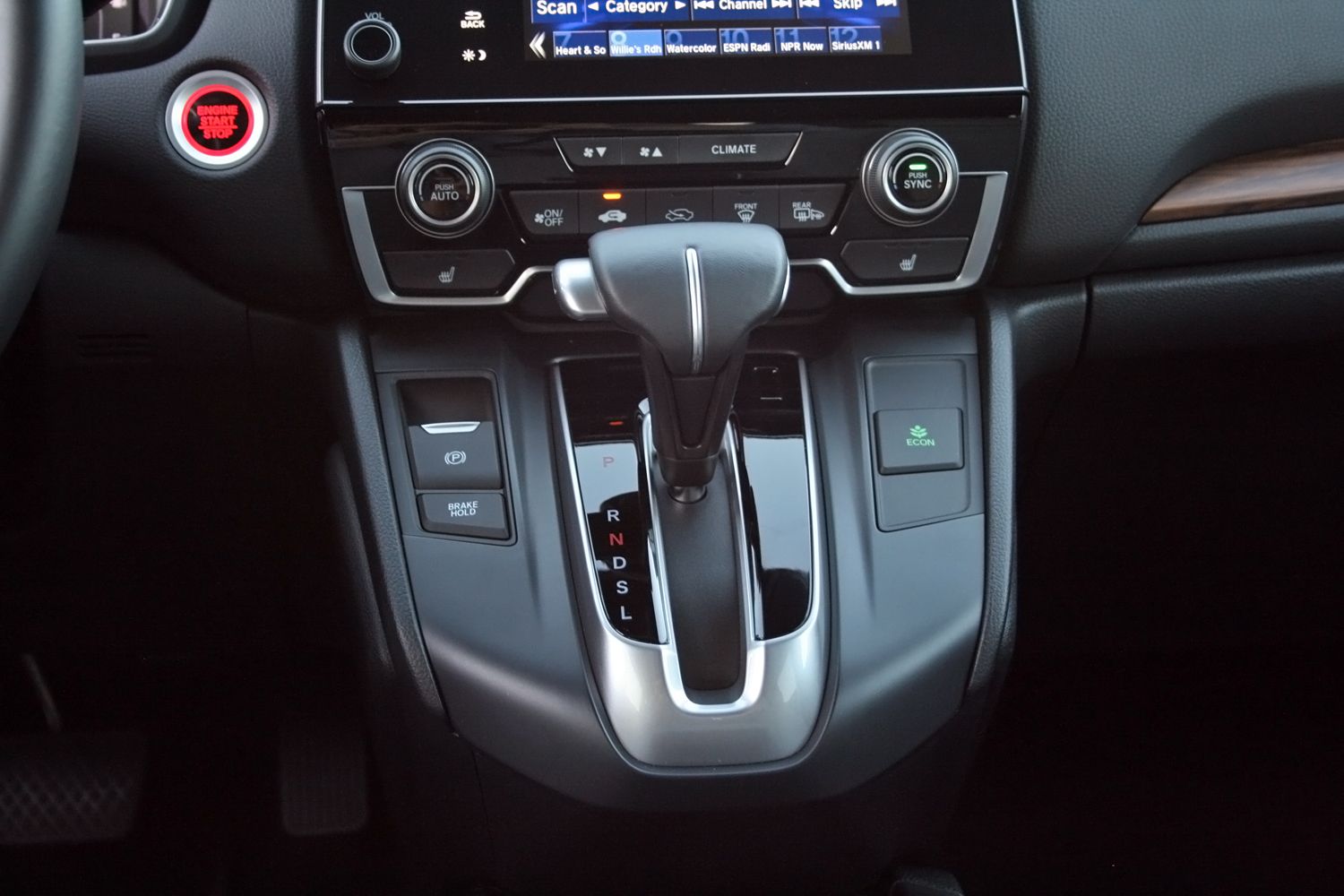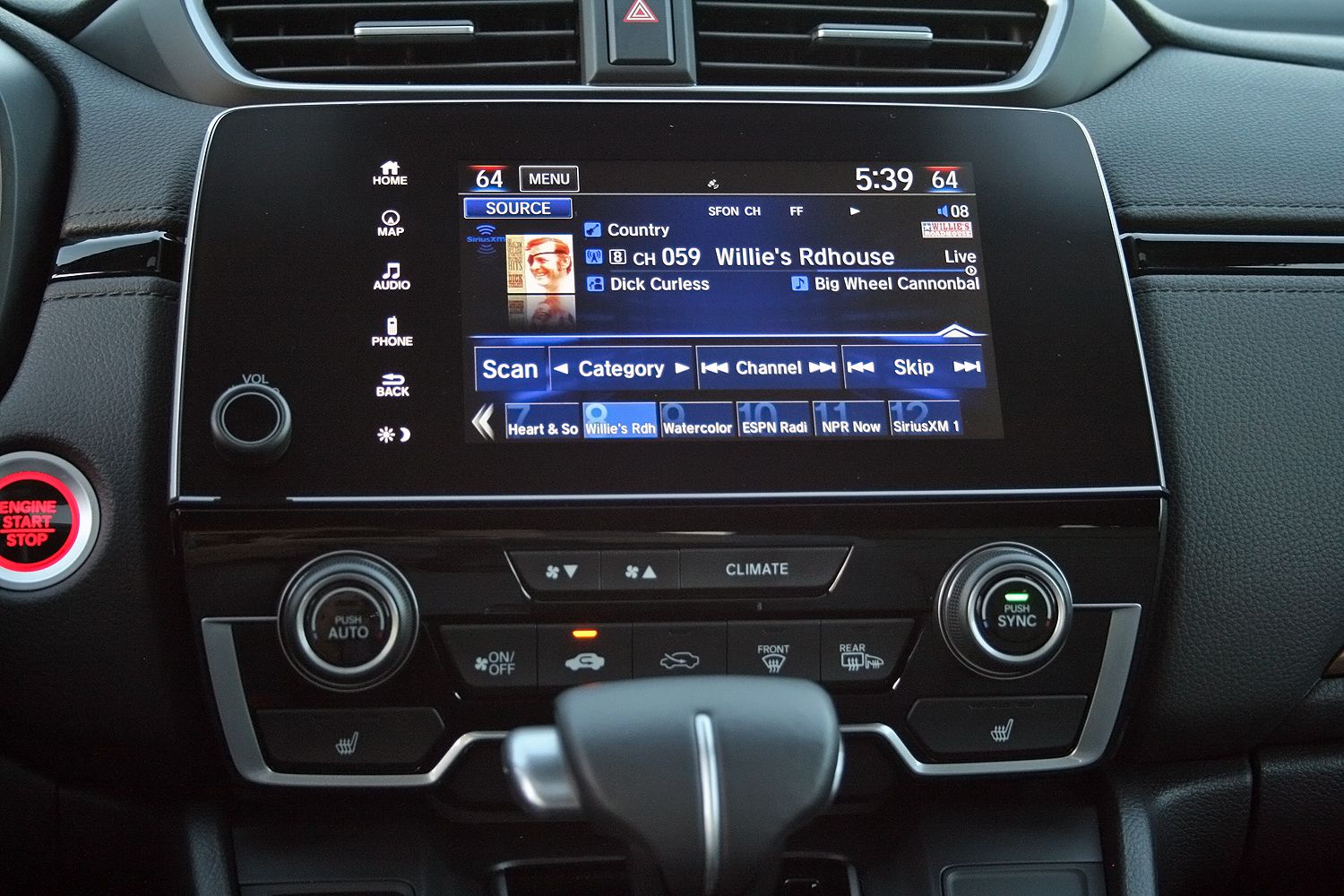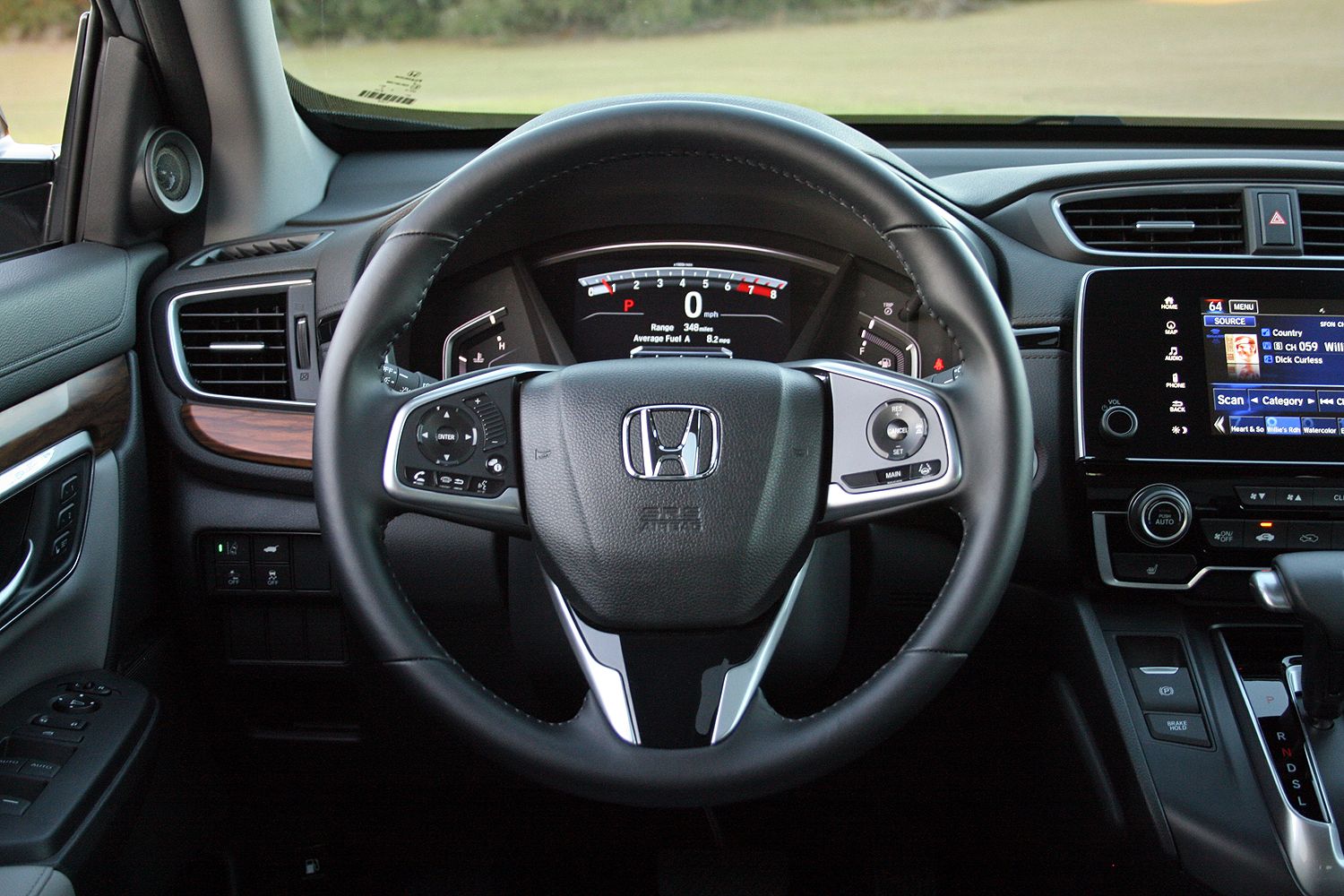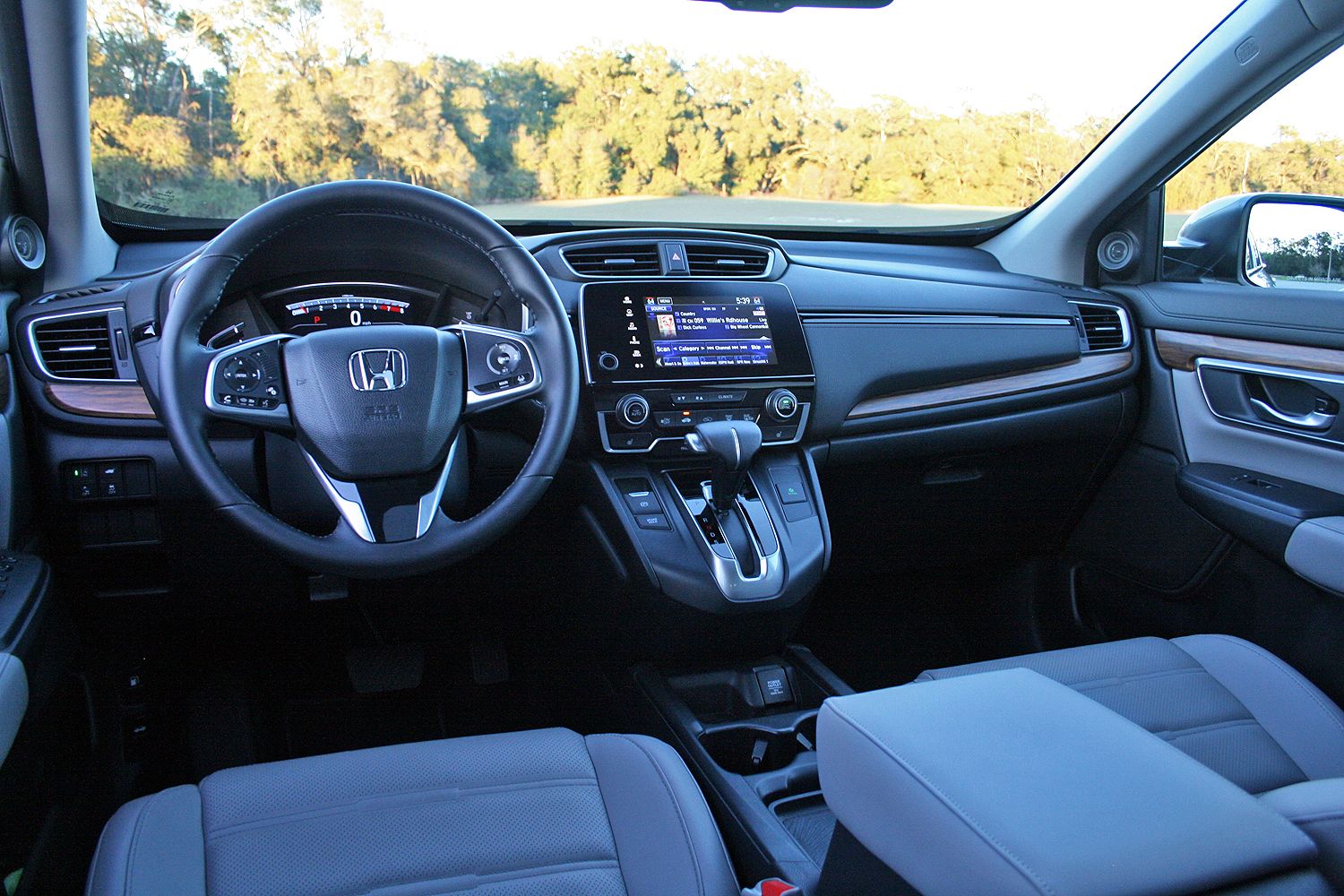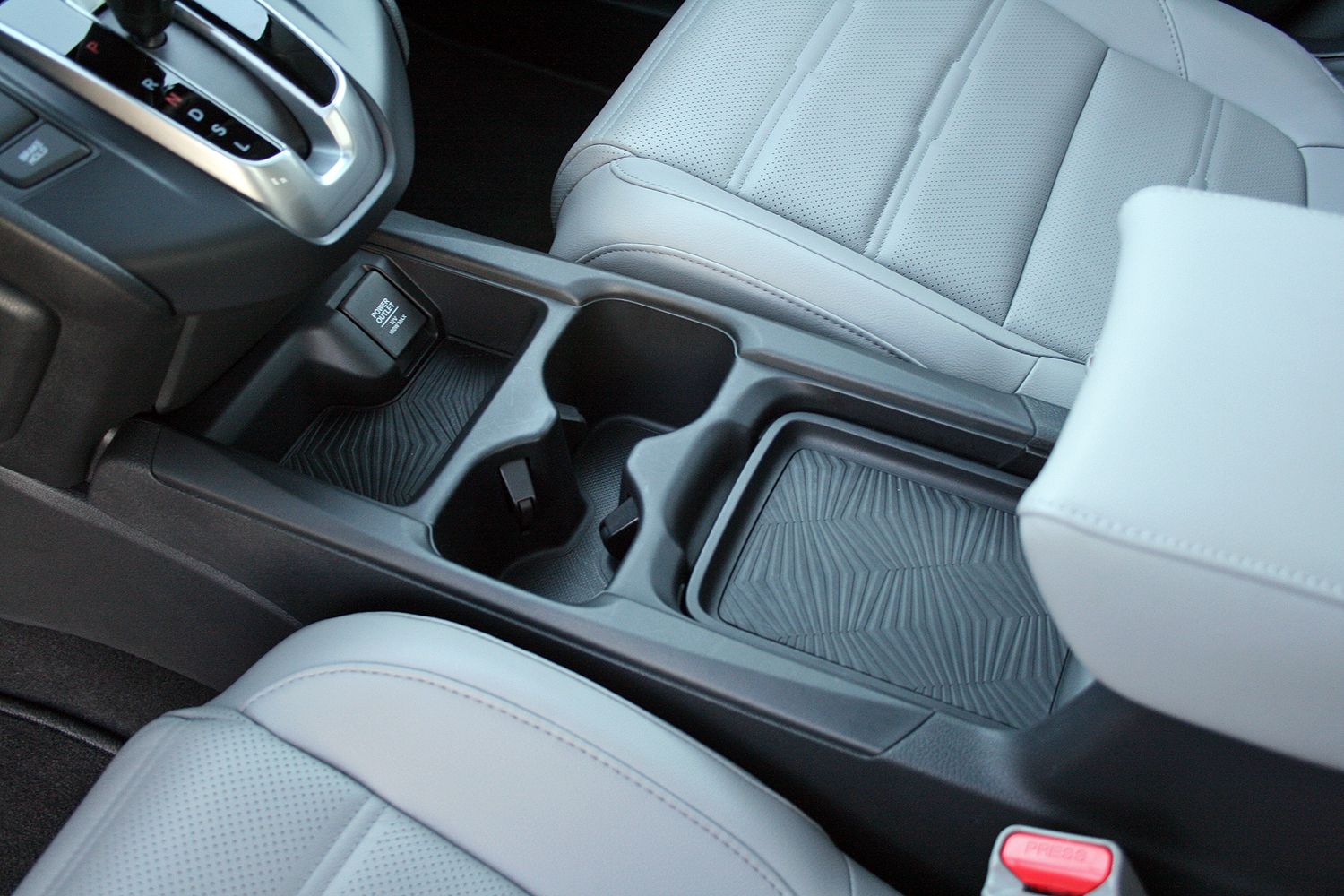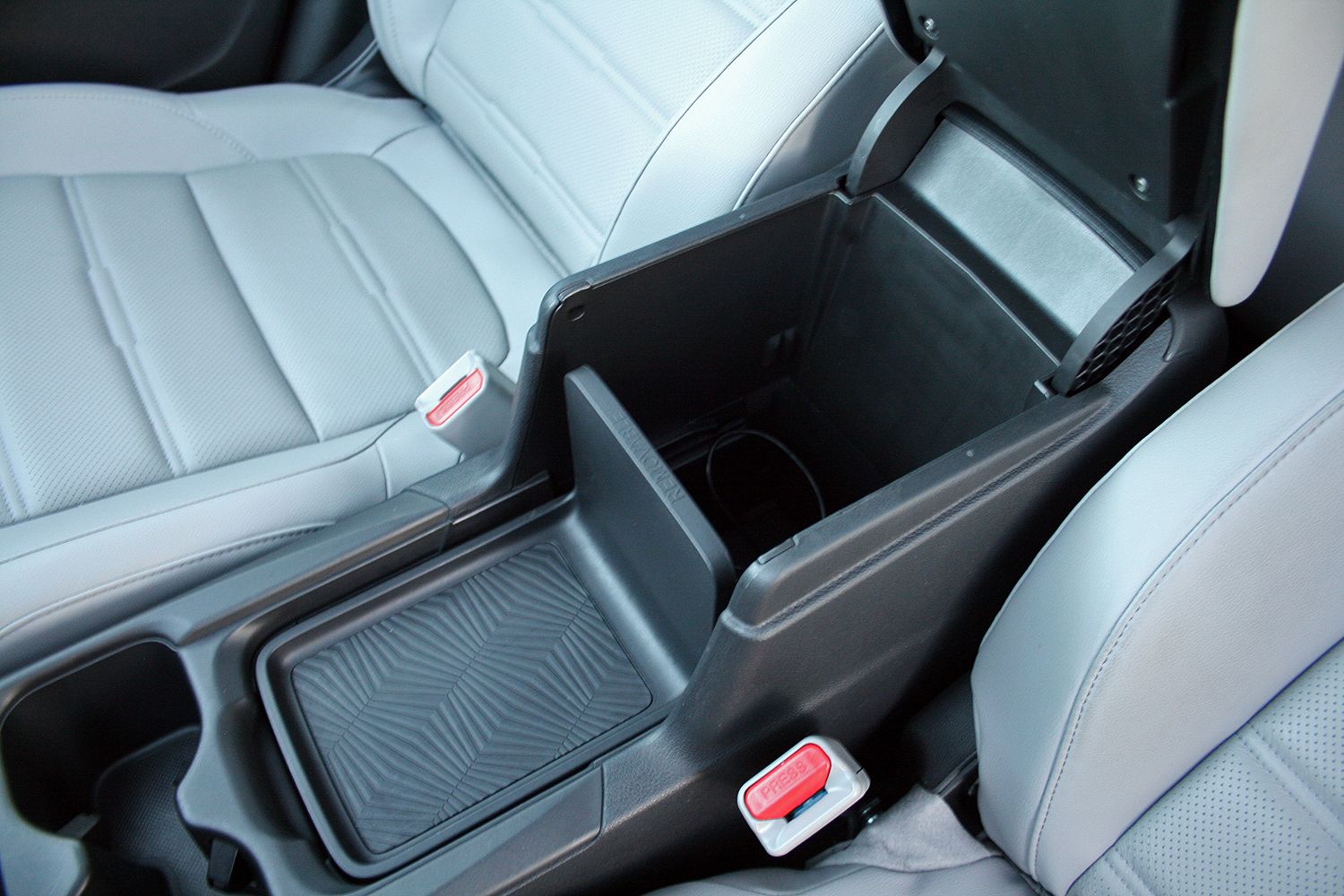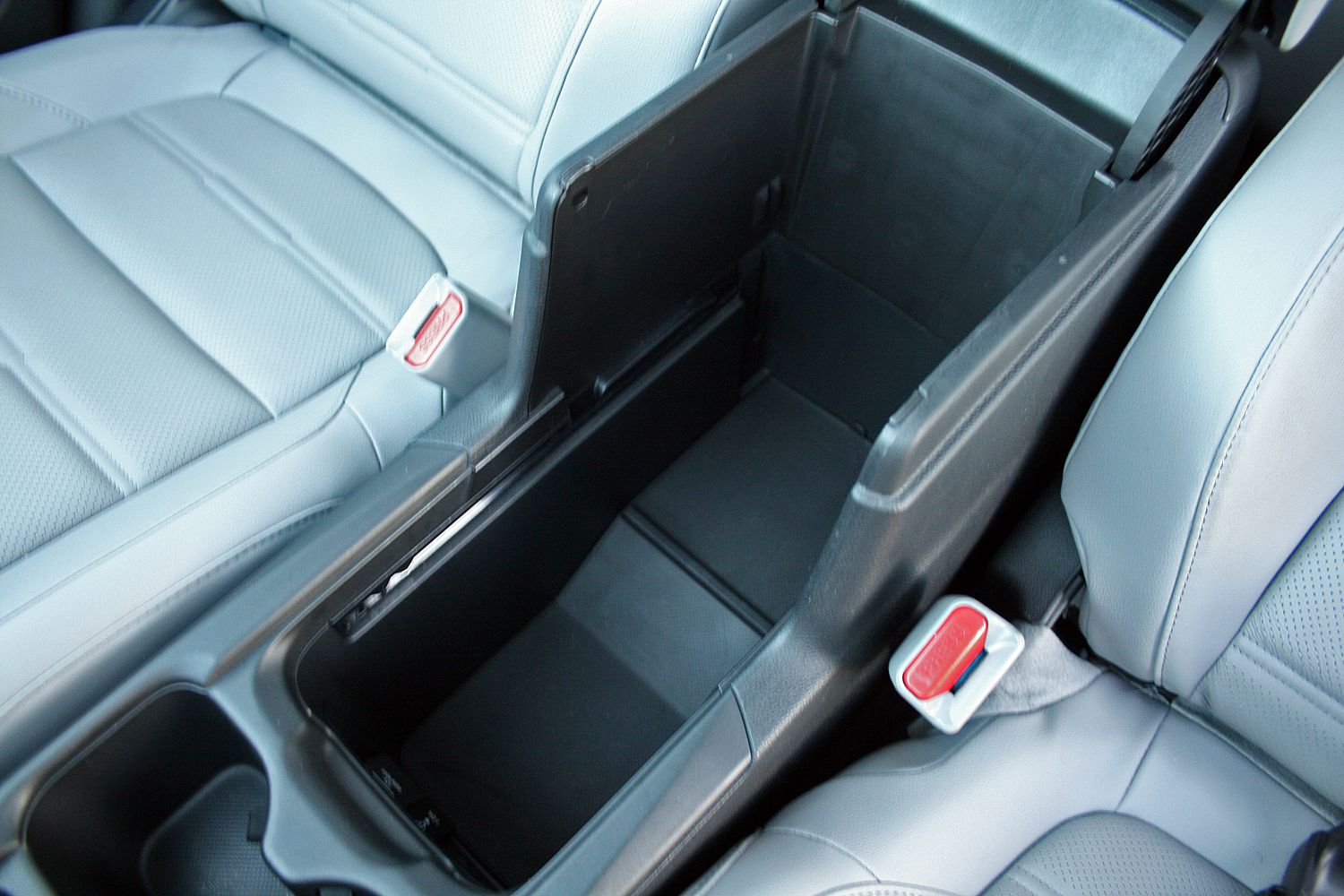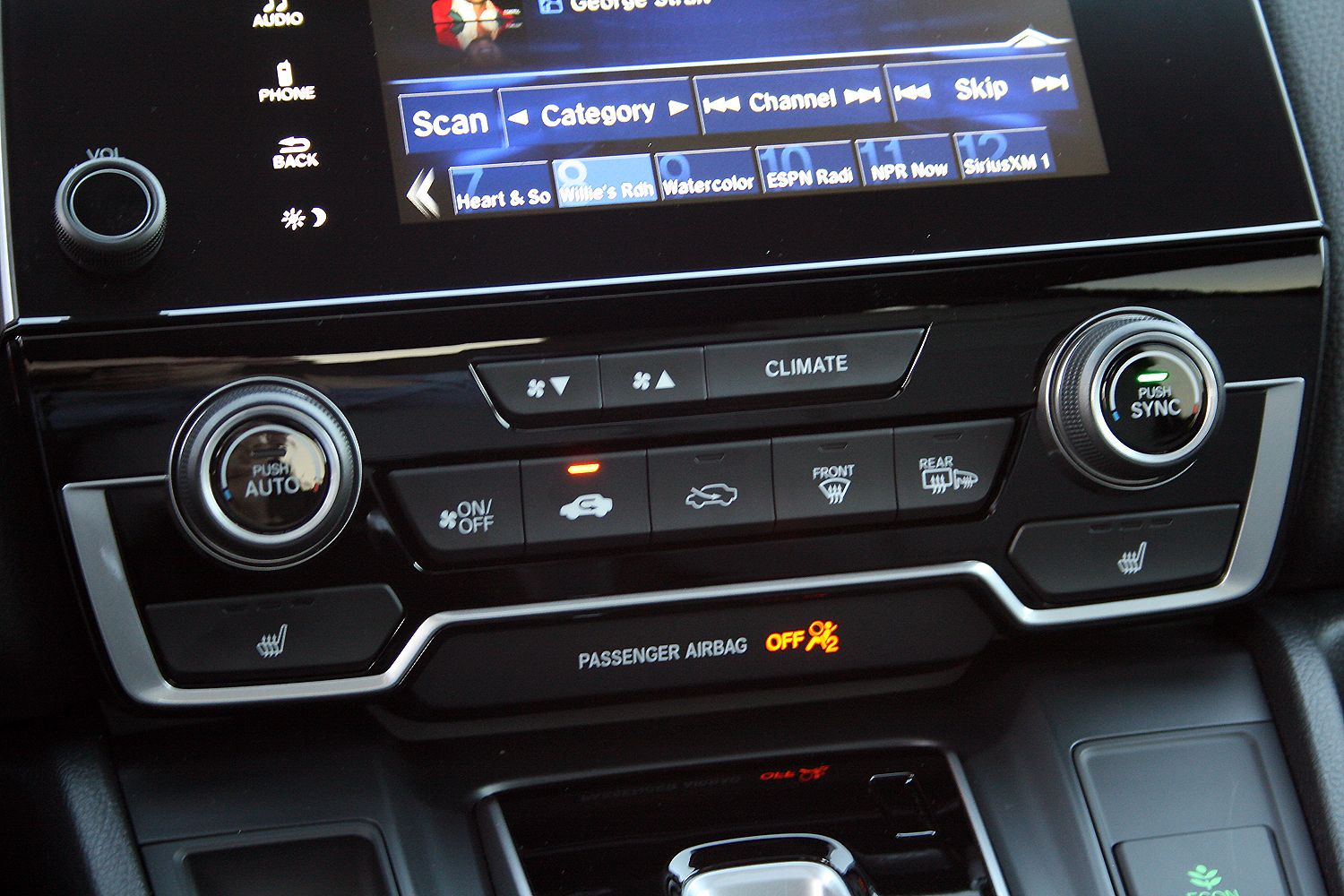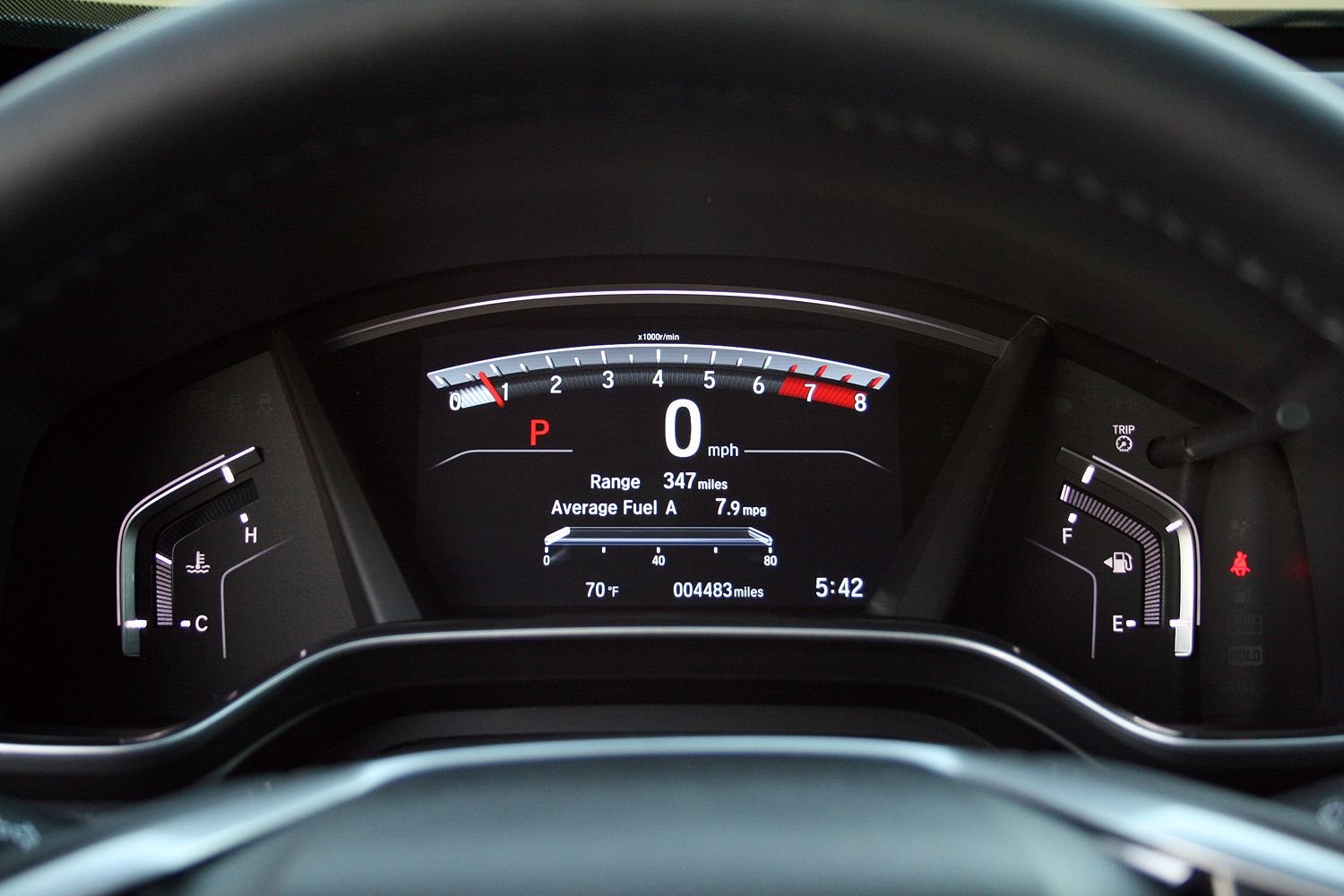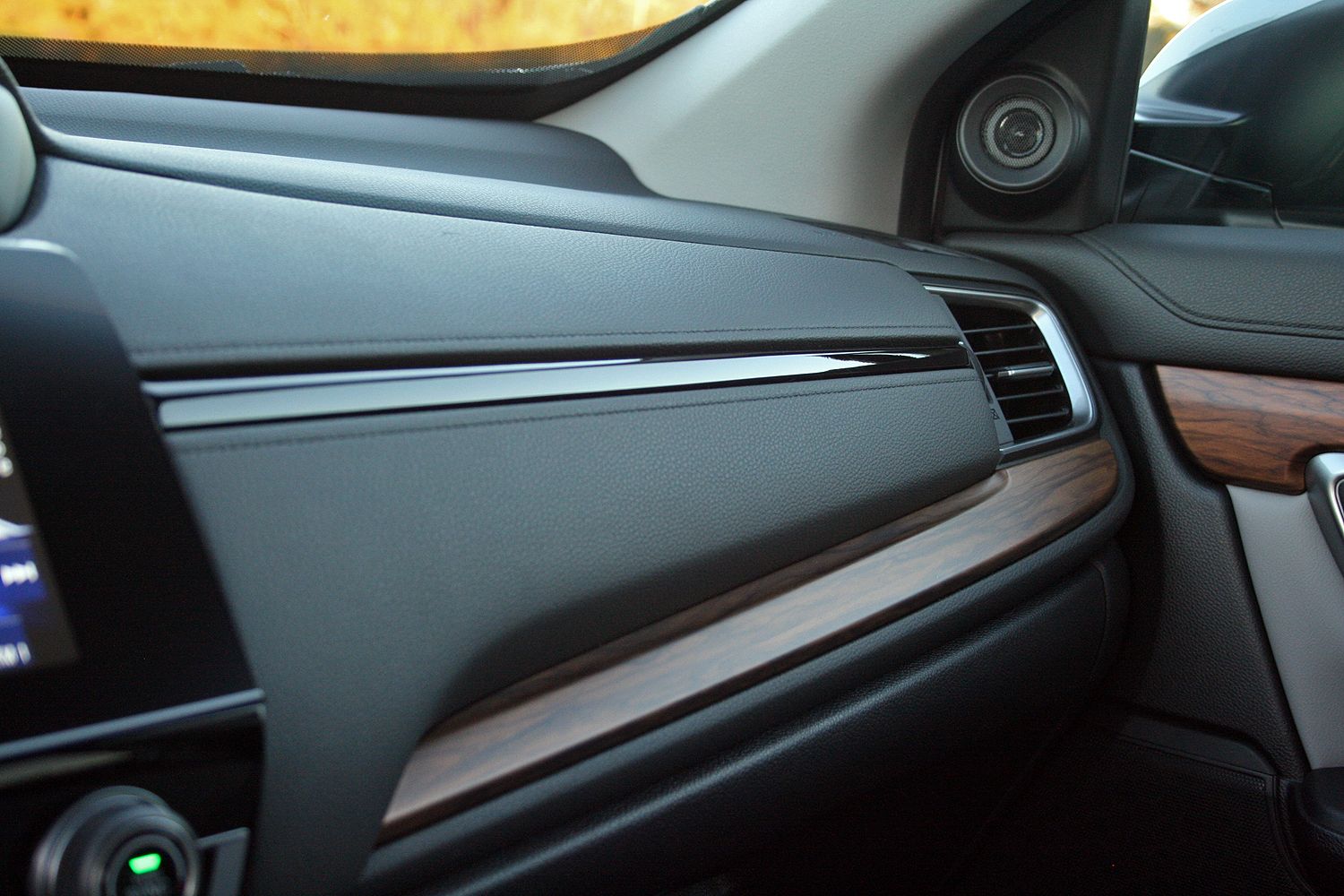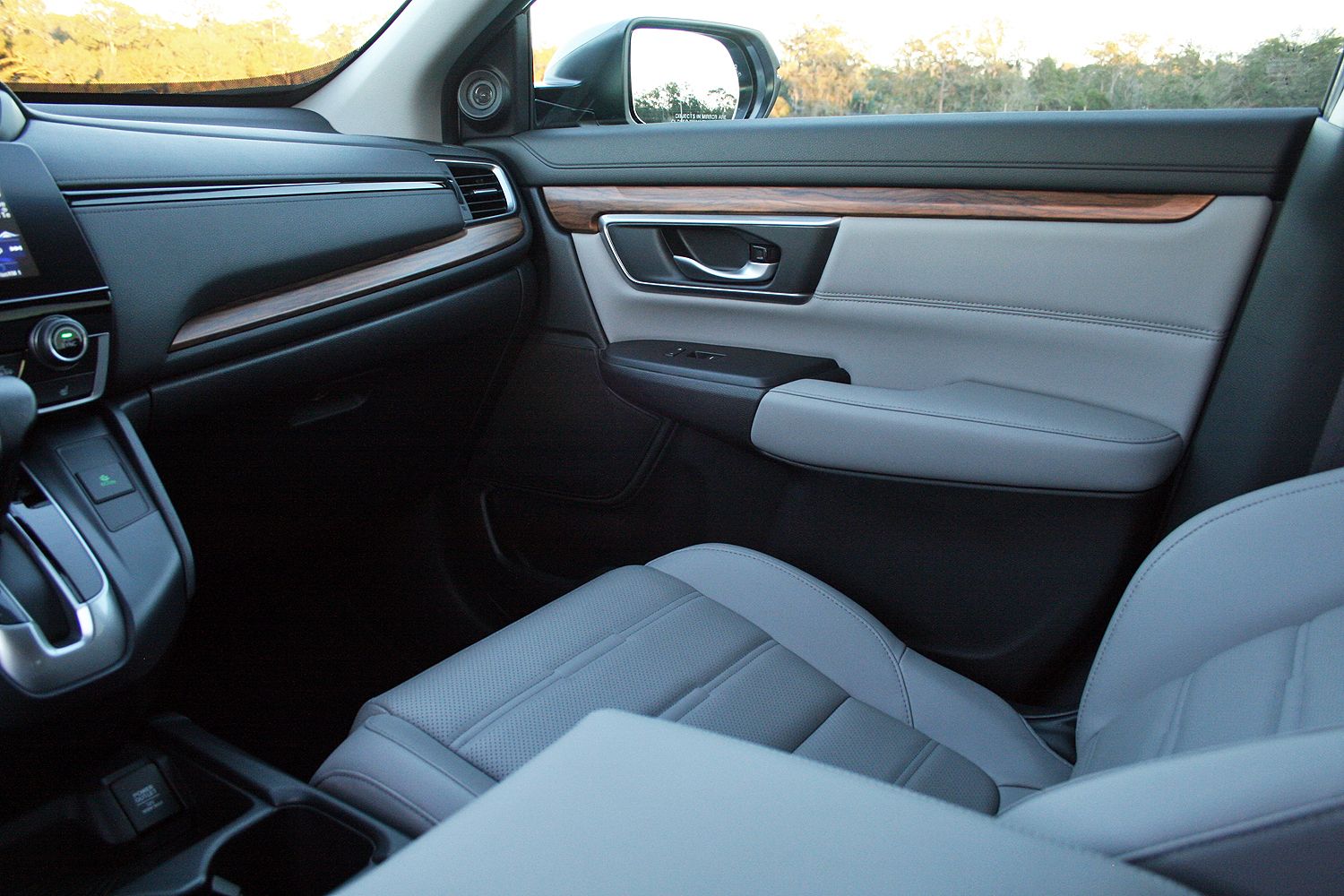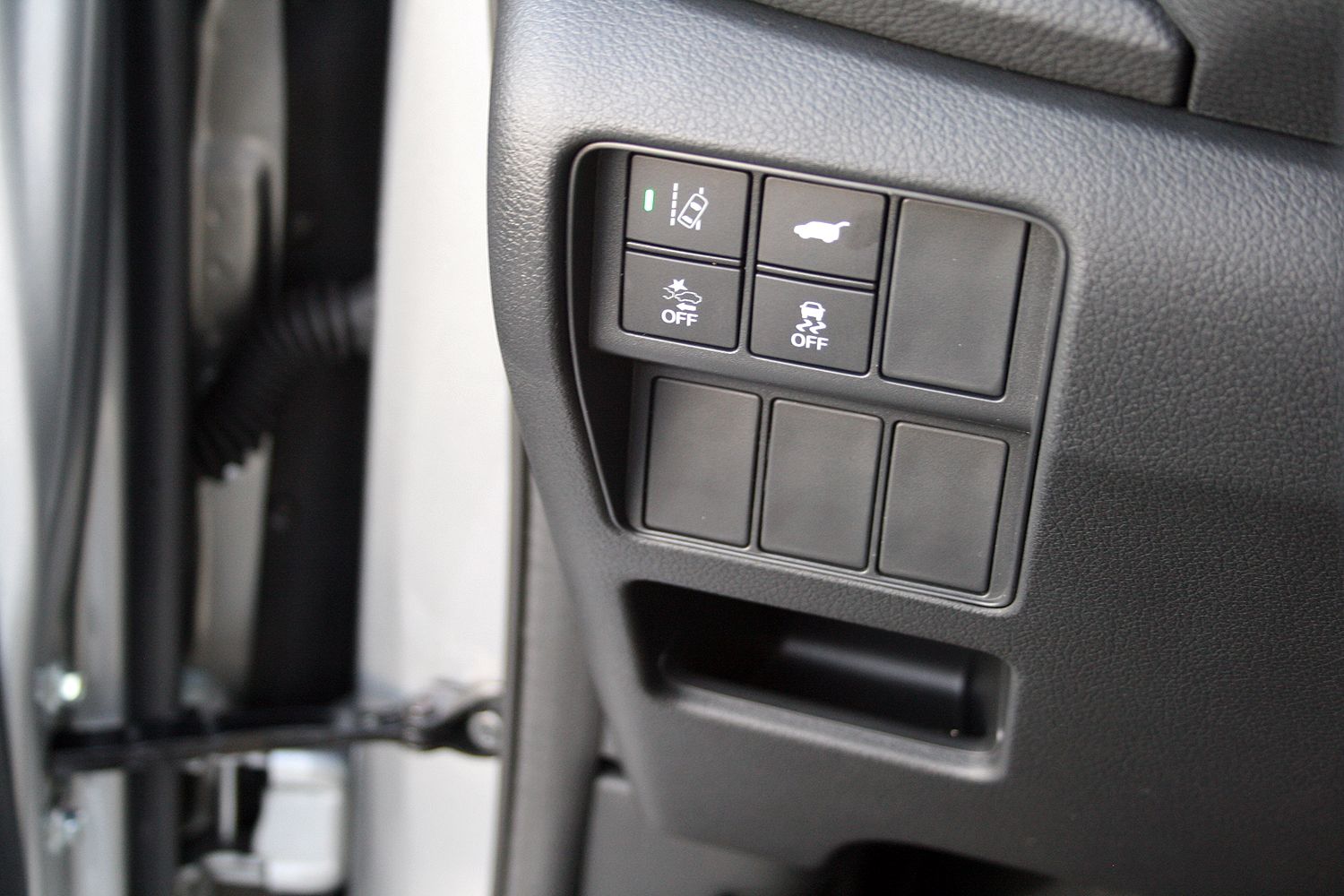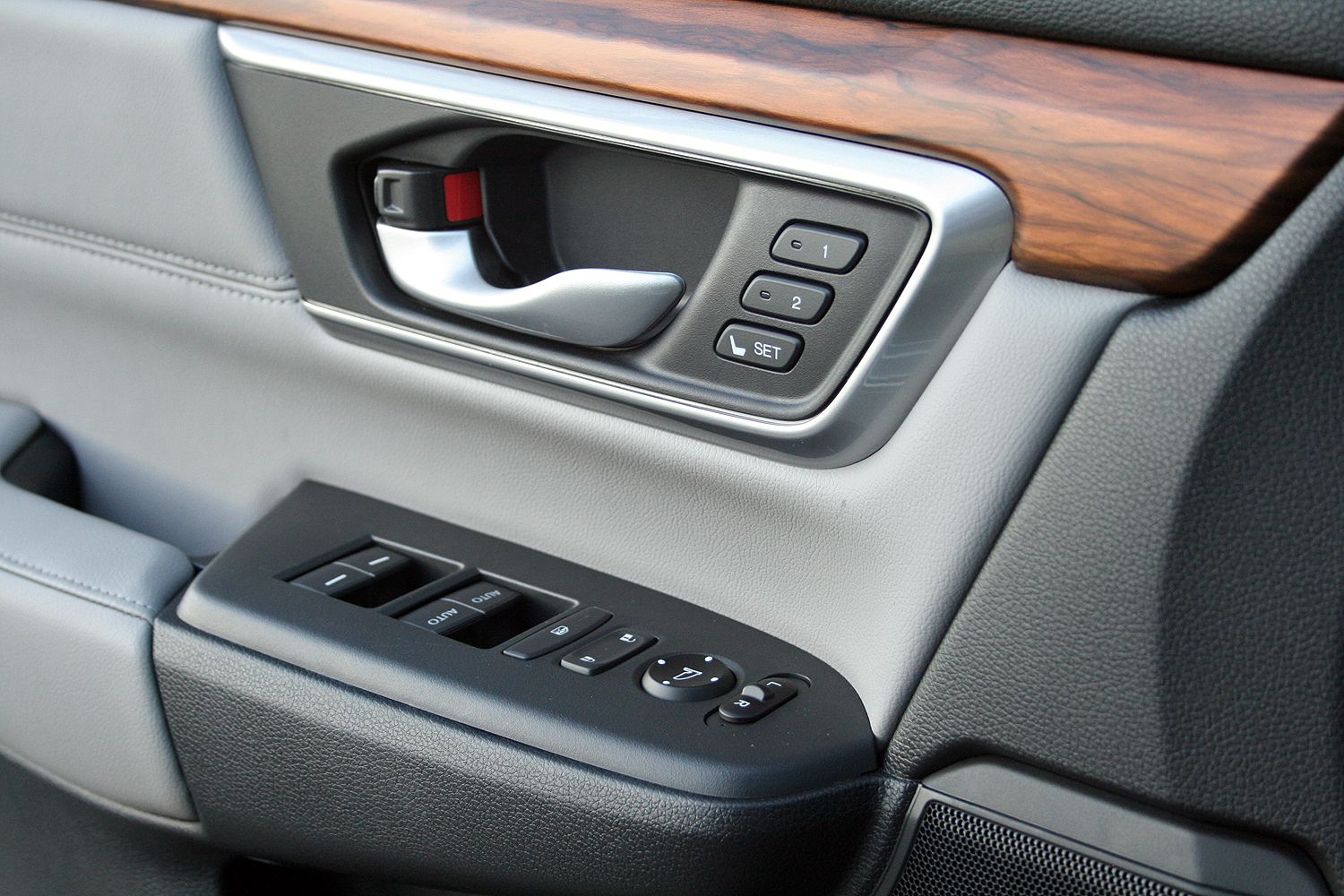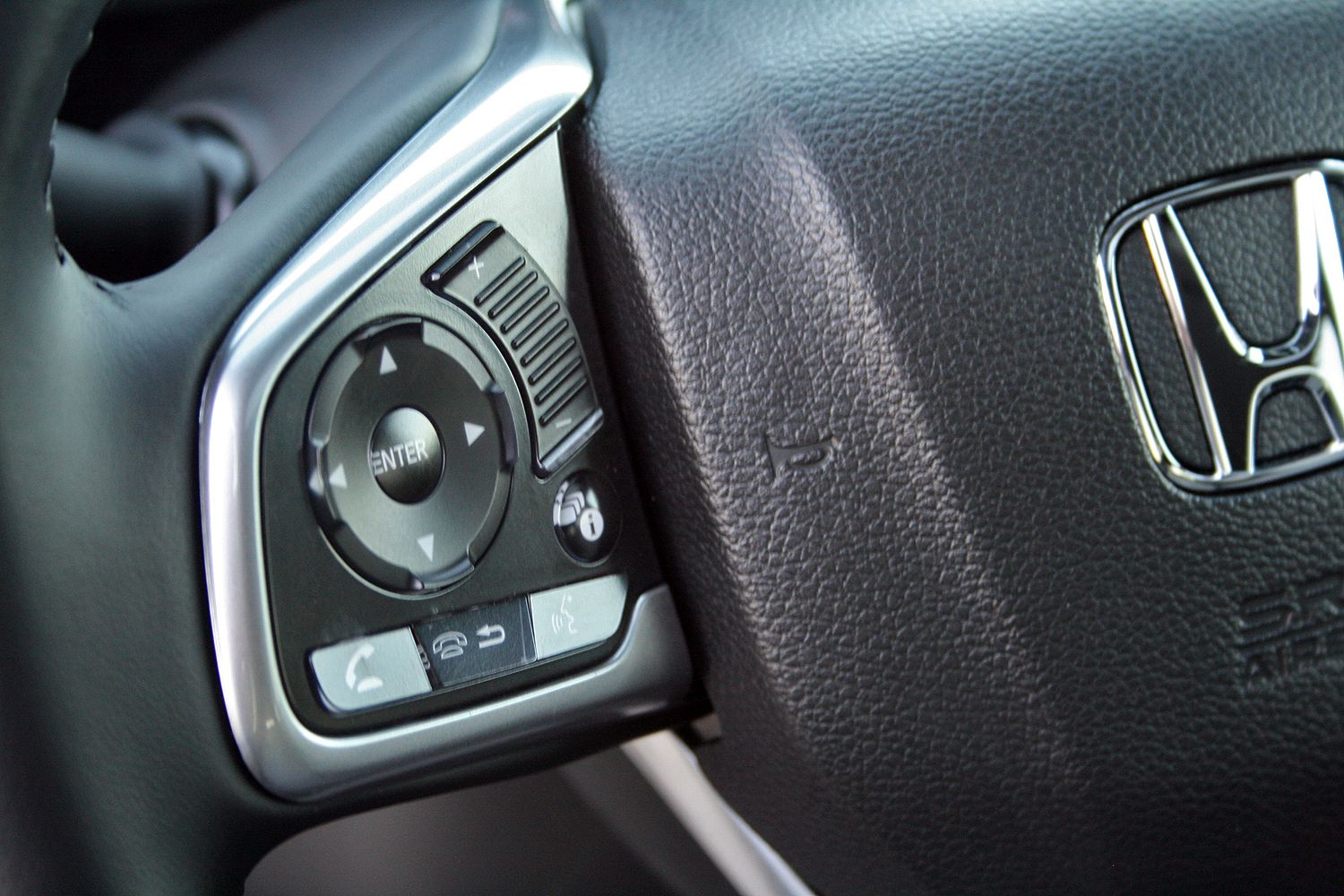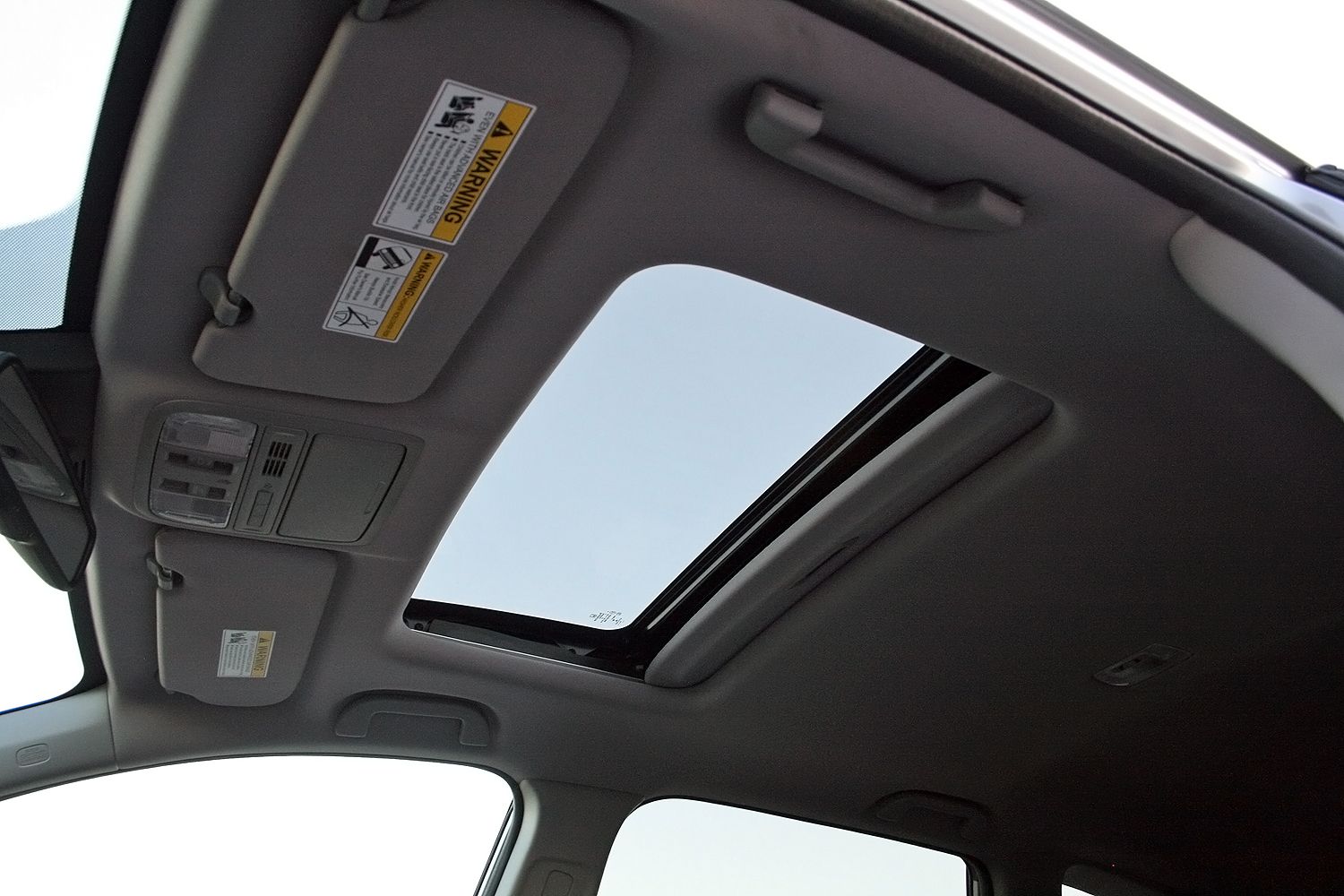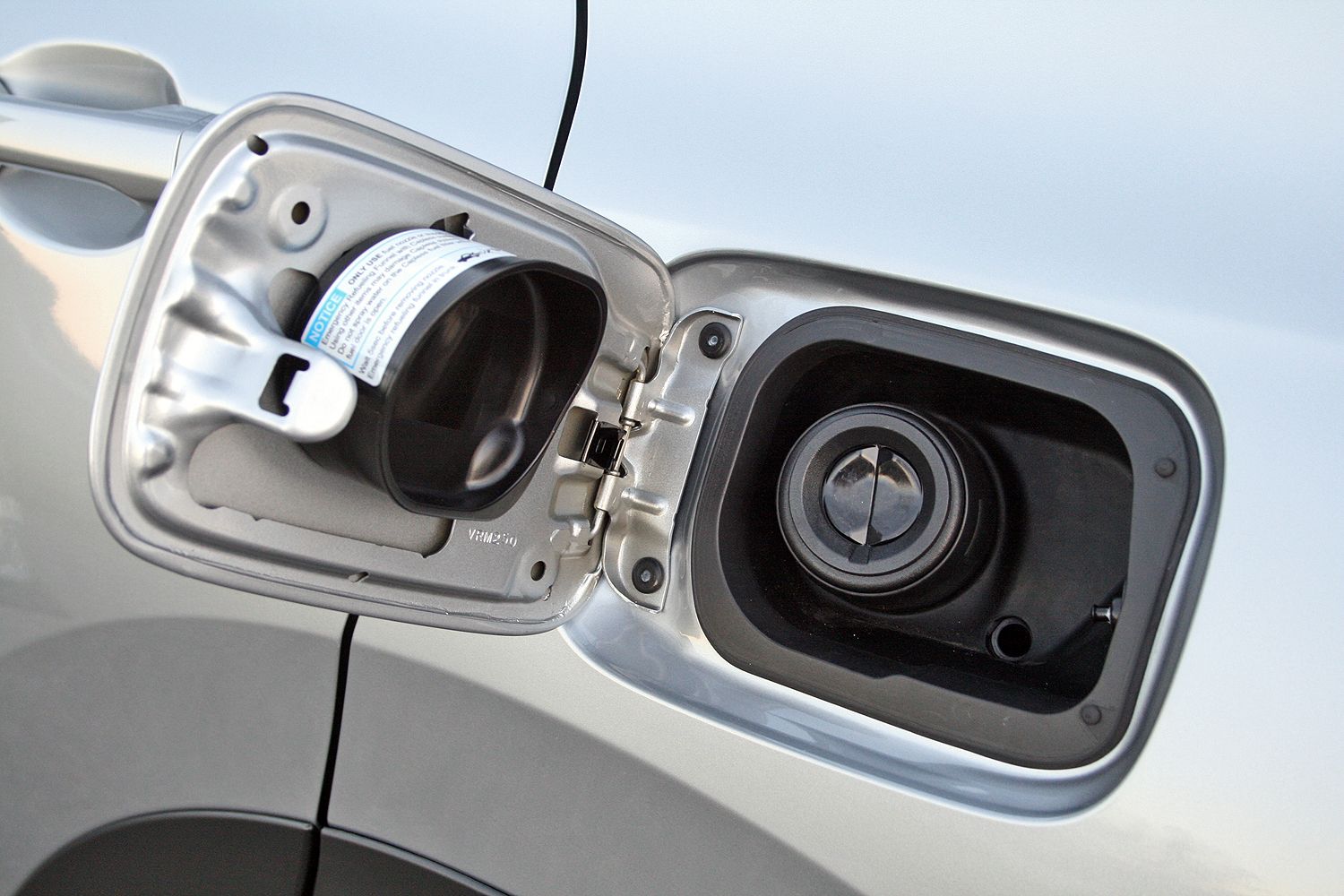Honda has made millions of CR-Vs since its introduction in 1996, selling them all over the world. Even in hard times, the CR-V as remained one of Honda’s most go-to models in terms of sales volumes. And who could blame customers for choosing the functional, fun, fuel efficient, and frugal crossover? It’s combination of Civic-based goodness mixed with a high-riding suspension and relatively voluminous interior make it a great those needing to split the difference between a traditional SUV and wagon.
That recipe carries over for the 2017 model year, though everything else about the CR-V changes. Honda introduces the CR-V’s fifth generation this year, which brings an all-new design language, a new chassis, a new interior, and a new 1.5-liter four-cylinder turbocharged engine. The CR-V is a bit larger, too, now slotting more evenly between the small HR-V and the three-row Pilot SUV. Honda says the new CR-V has class-leading second-row legroom, to boot. The CR-V’s Cargo room offers an impressive 75.8 cubic feet of room with the second row bench seat folded flat. That’s far more than the Ford Escape (67.8 cubic feet) and just a touch bigger than the Toyota RAV4’s (73.4 cubic feet). Despite this, the CR-V’s footprint isn’t much bigger than its competition.
Honda undoubtedly needs the CR-V to success. It can’t have a repeat of the 2011 Civic and its sudden redesign for 2012. I wholeheartedly think Honda won’t have that issue, but feel free to leave your thoughts on the new CR-V in the comments below.
Continue reading for the full driven review.
2017 Honda CR-V – Driven
- Make: Array
- Model: 2017 Honda CR-V – Driven
- Engine/Motor: inline-4
- Horsepower: 190 @ 5600
- Torque: 179 @ 2000
- Transmission: CVT
- [do not use] Vehicle Model: Array
Video Review
Exterior
The 2017 CR-V has certainly gown up, but it hasn’t lost that Honda flair for funky. Its front end resembles the Civic, which makes since as the two are closely related. The CR-V definitely wears a more macho face thanks to the larger lower grille and its black plastic cladding. It almost gives the CR-V a five O’clock shadow. Those whiskers continue around the side of the crossover, trimming the wheel wells, rocker panels, and rear bumper. The cladding give it that SUV-ish look without being overly forward in its attempt. The CR-V certainly won’t be mistaken for a Jeep Renegade.
Moreover, bits of chrome help point the budget-friendly crossover toward a higher tax bracket. Thankfully the classy details don’t translate to an exorbitant price tag. The chrome trim can be found at the front bumper, along the side rocker panels, around the windows, and spanning between the two taillights. A satin chrome-like “skid plate” rolls under the rear bumper, furthering that visually tough vibe. Dual exhaust tips give the appearance of power, though each branch off the same single pipe running from the 1.5-liter four-cylinder. And speaking of those taillights, it would seem Honda liked Volvo’s design. The shape is rather similar to several Volvo models, though Honda made several changes. Most appreciated is the 3D nature of the lights. The red housing bends along with the D-pillar and extends well beyond the bodywork. A deep scallop in the center furthers interest in its design.
And speaking of scallops, the license plate resides deep within the tailgate. The surrounding bodywork pushes the taillights and Honda badge further north, making the rear window appear small relative to the sizeable rear end. Surprisingly enough, rear visibility isn’t overly compromised.
Honda has also includes some interesting, aerodynamically tuned features back here. The rear quarter panel has a sharp crease running vertically between the taillight and lower reflector. This helps cleanly separate air from the bodywork to maximize fuel efficiency. Aesthetically, it makes for an interesting corner to see and touch.
The Competition
Perhaps the best-known and most often cross-shopped competitor to the CR-V is the Toyota RAV4. The RAV4 has been around since the mid-1990s and underwent its last generational change in 2012. A 2016 mid-cycle refresh brought new life and a polarizing mug to the two-row crossover, along with an available hybrid powertrain.
As far as looks go, the RAV4 is definitely interesting. Its front end wears a sharp upper section with the lower grille acting as the main air entrance for cooling. The unconventional front does make it stand out, though some might argue against whether it’s good or bad. Thankfully, the grille is the only polarizing section of the RAV4’s exterior. The sides and rear are all conventional crossover, with nothing overly exciting or noteworthy. That’s just how Toyota circa 2016 would have wanted it. I’d bet the next iteration of the RAV4 will include sportier styling that mirrors the new 2018 Camry.
Exterior Dimensions
|
Toyota RAV-4 |
Honda CR-V |
|
|
Wheelbase (Inches) |
104.7 |
104.7 |
|
Overall Length (Inches) |
183.5 |
180.6 |
|
Overall Width (Inches) |
72.6 |
73.0 |
|
Overall Height (Inches) |
67.1 |
66.1 (2WD) |
|
Tread Width (front/rear) (Inches) |
61./61.8 (17-inch wheels) |
63.063.7 (2WD) |
|
Ground Clearance (Inches) |
6.1 |
7.8 (2WD) |
|
Approach/Departure Angle |
28°/21° |
19.3°/23.5° (2WD) |
Interior
The 2017 Honda CR-V benefits from a rather well conceived interior with a focus on comfort and convenience. Cup holders can be found at every logical place, small cubbyholes and storage spots abound, and comfort for all four passengers (or five in a pinch) is impressive.
Behind the wheel, the driver is greeted with a fully digital gauge cluster. Unlike many high-end vehicles with an uninterrupted screen, the CR-V partitions its gauges as if they were analog. In reality, the coolant temperature and fuel level are only small digital readouts and not part of a massive, driver-configurable screen. Honda does allow the driver to change display settings and other small items in the center TFT display, including the bar-style tachometer. A simple digital speedometer proves simple and easy to read.
Mounted front and center, the infotainment system proved easy to use and within reach of both front-seat occupants. Honda even includes an honest volume knob. That’s thanks to all the squawking from journalists and customers about the silly volume slider bar. Stationary soft keys along the left side of the screen make for easy application shortcuts. I did find the infotainment system’s interface somewhat busy at first, but I grew to know where often-used buttons and read-outs were located.
The HVAC controls are incredibly simple to operate. The knobs control temperature for both the driver and front passenger, while buttons control fan speed. A dedicated climate button pulls up an HVAC settings page on the infotainment screen, if you’d prefer to adjust setting that way. Defrost, recirculation, and the side mirror heater buttons are all hard-key, located between the knobs. My tester also came equipped with three-level heated front seats.
The funky center stack also houses the gear shifter, electronic parking brake, and Econ button. Sadly Honda does not provide a way to manually control the CVT’s ratios, leaving only a Sport mode and Low mode. I’ll talk more on that in the “Behind The Wheel” section below.
The center console was definitely made for odds and ends. Coin trays, two squarish cup holders, and a deep center storage area provide more than ample storage room. The compartment is covered by a removable and slidable L-shaped lid that also serves as a perfect cell phone holder. A 12-volt power port, two USB ports, and an AUX input jack are all located in and around this area. Rear passengers also get two, 2.5-amp USB ports that are powerful enough to charge larger devices like iPads.
Rear passengers will enjoy the bench seat’s high seating height and ample legroom. Head and shoulder room is also impressive for this size vehicle. A folding center armrest makes and rear HVAC vents make longer trips more bearable.
When it comes time to haul cargo, the CR-V is up to the task. Door handle-like pulls release the second row seatbacks, allowing them to fall forward. The 60/40-split bench is a bit higher than the rear cargo area’s load floor, so the CR-V doesn’t’ technically have a flat load floor. I can’t imagine how the two-inch step-up would be detrimental to cargo storage, though. Smaller compartments aft of the wheel wells make containing loose objects easier. Honda also provides a power-operated rear tailgate. The tailgate uses the now-familiar kick-to-open feature.
All told, the CR-V’s interior is well designed and executed. Fit and finish is impressive, especially the wood trim work. This Honda might be small, but when fitted with the Touring trim, comes rather well equipped.
The Competition
The RAV4’s interior is typical Toyota. Familiar switch gear and the Entune infotainment system are both present, along with analog gauges flanking a rather dull driver information screen. Tall seating positions for all five passengers means more comfort and a commanding view of the road.
Speaking of comforts, the RAV4 is available with dual-zone climate controls, heated front seats with memory settings for the driver seat, and a good amount of space for people. Technology wise, the 2017 RAV4 comes with wireless phone charging, USB ports, an AUX input jack, Bluetooth, a CD player, and either the 6.1-inch Entuen system, or the 7.0-inch Entune system on the range-topping Limited trim level.
Space for cargo is impressive, with 38.4 cubic-feet of room behind the second row bench, or 73.4 cubic-feet with the second-row folded flat. That’s on par with the CR-V’s cargo volume of 39.2 and 75.8 cubic-feet respectively.
The Competition
|
Toyota RAV-4 |
Honda CR-V |
||
|
Toyota RAV-4 |
Honda CR-V |
39.8/38.9 |
40.1/39.2 |
|
Headroom front/rear (Inches) |
42.6/37.2 |
41.3/40.4 |
|
|
Legroom front/rear (Inches) |
57.3/55.4 |
57.9/55.6 |
|
|
Shoulder Room front/rear (Inches) |
54.3/48.9 |
55.1/49.5 |
|
|
Hip Room front/rear (Inches) |
38.4/73.4 |
39.2/75.8 |
|
|
Cargo volume seats up/folded (cu ft) |
101.9 |
105.9 |
Drivetrain
Powering the 2017 CR-V is Honda’s new 1.5-liter turbocharged four-cylinder. The engine is transversely mounted in the engine bay, with the its Continuously Variable Transmission powering the front tires. My tester was equipped with the optional AWD system, which sends power rearward when extra traction is needed. Variables include acceleration, throttle position, wheelspin, and steering input angles.
The all-aluminum engine sues direct fuel injection and produces 190 horsepower at 5,600 rpm and 179 pound-feet of torque at 2,000 rpm. Those numbers aren’t overly impressive, but the engine does an adequate job of propelling the 3,508-pound crossover down the road. The sprint to 60 mph only takes 7.6 seconds – surprising for a four-cylinder and CVT. Spicy performance isn’t the CR-V’s main gig though – that would be balancing power and fuel efficiency. I’ve stated power side of the equation, so now for fuel economy. The EPA rates the 2017 CR-V with AWD at 27 mpg city, 33 mpg highway, and 29 mpg combined. I averaged around 25 mpg during my weeklong evaluation.
Much of this is thanks to Honda’s i-VTEC valvetrain system. It uses a special camshaft system to control valve lift, duration, and timing – all of which change with engine rpm. It’s like having two camshafts in one; it gives the engine a fuel-sipping character down low, and a peppier attitude when the throttle meets the floor.
The 1.5-liter turbo is actually the “optional” engine in the CR-V. The base LX trim gets the carry-over 2.4-liter four-cylinder, which makes 184 horsepower and 180 pound-feet of torque. It too is mated to the CVT and can be had with AWD. Higher trims, which include the EX, EX-L, and Touring, come standard with the 1.5-liter turbo.
The CR-V is definitely built for light-duty, on-road driving. Its ground clearance is less than some of its more off-road capable competitors and its only rated to tow 1,500 pounds. Nevertheless, the CR-V is a willing vehicle. It’s just not expected to do many traditional SUV-like tasks.
The Competition
The RAV4 is available with two powertrain options. The standard engine is the 2.5-liter four-cylinder making 176 horsepower and 172 pound-feet of torque. The engine uses dual overhead cams that operate 16 valves, which are modulate by variable valve timing. The optional powertrain uses the 2.5-liter, but attaches two AC electric motors powered by a 1.6-kWh nickel-metal hydride battery pack. The front motor makes 141 horsepower while the rear motor makes 67 horsepower. The total system output is 194 horsepower.
The non-hybrid RAV4 uses a conventional six-speed automatic transmission, while the hybrid uses a Continuously Variable Transmission. FWD comes standard and AWD is optional. AWD does, however, come standard on the RAV4 Hybrid.
RAV4s with the standard engine and FWD earn an EPA-estimated 23 mpg city and 30 mpg highway, while the RAV4 Hybrid jumps to 34 mpg city and 30 mpg highway.
|
Toyota RAV-4 |
Honda CR-V LX |
Honda CR-V EX |
|
|
Engine |
2.5-liter, four-cylinder |
2.4-liter In-Line 4-Cylinder |
1.5-liter In-Line 4-Cylinder |
|
Horsepower |
176 HP @ 6,000 RPM |
184 HP @ 6400 RPM |
190 HP @ 5,600 RPM |
|
Torque |
172 LB-FT @ 4,100 RPM |
180 LB-FT @ 3,900 RPM |
179 LB-FT @ 2,000-5,000 RPM |
|
Transmission |
6-speed ECT-i automatic |
CVT |
CVT |
|
Fuel economy city/highway/combined |
23/30/26 |
26/32/28 |
28/34/30 |
|
Curb weight (Lbs) |
3,455 -3,630 |
3,307-3,421 |
3,349-3,473 |
|
Towing capacity (Lbs) |
1,500 Lbs |
1,500 Lbs |
1,500 Lbs |
Behind the Wheel
The CR-V has certainly grown larger over the last few generations, but it remains relatively compact and easy to maneuver through crowded city streets. Good visibility through its large side windows and windshield add to the feeling. The steering is nicely weighted – not to heavy or too light – but fixed somewhere in between. Torque steer is mostly mitigated by the AWD system, with torque being routed rearward when the steering wheel is cocked at an aggressive angle.
The 1.5-liter turbo four-cylinder does a good job at making power and pushing the CR-V down the road. it even hints at its boosted nature when coming off the throttle, slowing down to a stop. The turbo give a decrescendoing burr if you listen close enough. That’s about the only mechanical arousal given by the Honda. The CVT, while one of the better examples I’ve tested, still keep the engine buzzing along at a droning 2,500 rpm during average around-town drives. It just sounds uninspired.
Driving a curvy road will induce minor body roll, but nothing unexpected. The steering does give some feedback when loaded in a corner, but otherwise is a numb joystick doubling as a hand rest. The CR-V is hardly the only crossover with these driving dynamics, so it’s hard to dock points for it being on par.
Engine noise aside, the CR-V does the job of family hauling and fuel sipping well. It’s easily livable and should provide years of uninterrupted service. Its versatility brought by the AWD system, along with its ability to tow a small trailer weighing under 1,500 pounds gives it a solid lead over any comparable sedan or wagon.
Pricing
The 2017 Honda CR-V carries a starting price of $24,045. That gets you the base LX trim with the carry-over 2.4-liter four-cylinder and FWD. The mid-level EX starts at $26,695 and is a much better buy thanks to its 1.5-liter turbo four-cylinder and upgraded interior and added features. The EX-L is the next in line. It starts at $29,195. The Touring trim, like my tester, starts at $32,395. That doesn’t include AWD, however, and you’ll have to pay $1,300 extra for the feature, just like the other trim levels. Nevertheless, the added value comes in the leather-lined interior and upgraded infotainment system.
|
Honda CR-V LX (2WD) |
$24,045 |
|
Honda CR-V LX (AWD) |
$25,345 |
|
Honda CR-V EX (2WD) |
$26,695 |
|
Honda CR-V EX (AWD) |
$27,995 |
|
Honda CR-V EX-L (2WD) |
$29,195 |
|
Honda CR-V EX-L (AWD) |
$30,495 |
|
Honda CR-V EX-L W/ Navi (2WD) |
$30,195 |
|
Honda CR-V EX-L w/ Navi (AWD) |
$31,495 |
|
Honda CR-V Touring (2WD) |
$32,395 |
|
Honda CR-V Touring (AWD) |
$33,695 |
The Competition
The 2017 RAV4 carries a starting price of $24,910 for the LE trim. The mid-grade XLE starts at $26,830. The sport-themed SE trim starts at $29,985, the Limited starts at $31,930, and the range topping Platinum starts at $34,750. On he hybrid side, the XLE Hybrid starts at $29,030, the SE Hybrid starts at $32,185, and the Limited Hybrid starts at $34,040. The Platinum trim is not offered with the hybrid powertrain.
|
Toyota RAV4 LE |
$24,910 |
|
Toyota RAV4 XLE |
$26,830 |
|
Toyota RAV4 SE |
$29,985 |
|
Toyota RAV4 Limited |
$31,930 |
|
Toyota RAV4 Platinum |
$34,750 |
|
Toyota RAV4 XLE Hybrid |
$29,030 |
|
Toyota RAV 4 SE Hybrid |
$32,185 |
|
Toyota RAV4 Limited Hybrid |
$34,040 |
Other Competition Crossovers
Mazda CX-5
Mazda’s popular CX-5 crossover is a handsome competitor to the Honda CR-V. The Mazda combines its latest Kodo design language with a well-appointed interior for a striking appearance. The CX-5 is heavily refreshed for the 2017 model year, though most of its mechanicals carry over unchanged. Nevertheless, the CX-5 offers a high-style, driver-focused package with Mazda’s “zoom zoom” flair.
Power comes from three engine options: the standard 2.0-liter four-cylinder making 155 horsepower, the optional 184-horsepower, 2.5-liter four-cylinder, and the new-for-2017, 2.2-liter Skyactiv-D diesel. The 2.0-liter can be paired with an honest six-speed manual transmission and FWD, while the 2.5-liter comes with a six-speed automatic transmission and AWD. Mazda hasn’t announced what transmission and drive-type pairing come with the diesel, however.
Prices for the CX-5 start at $23,595 for the Sport trim. The mid-grade Touring trim starts at $25,215. The Grand Touring trim starts at $28,570.
Read more about the Mazda CX-5 here.
Ford Escape
The Ford Escape also gets a new face for 2017. It features a face similar to other Ford products and includes the six-sided grille, large lower air intake, sweeping headlights, and large fog lights. Strong character lines run rearward to the equally familiar rear end. SUV-ish bumper protectors help beef up this crossover, while its low-hanging chin keeps it from truly experiences rugged terrain. The interior is also new, with SYNC 3 in the dash, a sizable TFT display in the gauge cluster, and plenty of room for five people.
Under the hood comes three engine options: the base 2.5-liter four-cylinder, which is mostly relegated to rental fleets; The peppy 1.5-liter EcoBoost four-cylinder; and the surprisingly stout 2.0-liter EcoBoost four-cylinder. All three come with a six-speed automatic and FWD, though the two turbocharged engines can be optioned with AWD. Horsepower ratings are 168, 179, and 245, respectively. The 2.0-liter is definitely the enthusiast’s choice.
Pricing for the 2017 Escape starts at $23,750 for the base S trim level. The SE starts at $25,250. The range-topping Titanium trim starts at $29,250. It’s the Titanium trim that gets the powerful 2.0-liter EcoBoost four-cylinder.
Find out more about the Ford Escape here.
Conclusion
During my weeklong testing, the Honda CR-V proved to be a fun little run-about willing to haul people and things in comfort while surrounded by surprising comfort. No, it’s not an Acura substitute, but the CR-V is still far more luxurious than it was just 10 years ago, especially decked out in its Touring trim.
Though I don’t prefer the CVT, the transmission does help with fuel economy by keeping the 1.5-liter turbo four-cylinder spinning at the optimal speed, regardless of the vehicle’s speed. The turbo-four provides an adequate amount of power for the 3,500-pound crossover.
Those looking for a reliable and stylish ride with plenty of functionality and all-weather traction should have the CR-V on their short list. As always, I recommend driving each competitor and doing homework before making the plunge. Cars are expensive, after all.

